-
Posts
2,391 -
Joined
-
Last visited
-
Days Won
8
Content Type
Profiles
Forums
Events
Posts posted by habigman
-
-
Hückel (Weilheim) Chevreau, size 58cm, green. It's mid 1950s and with little to no wear and has the original paper sales tag. The felt color and finish (Antilope like) are fantastic. Also great overall construction and detail work .

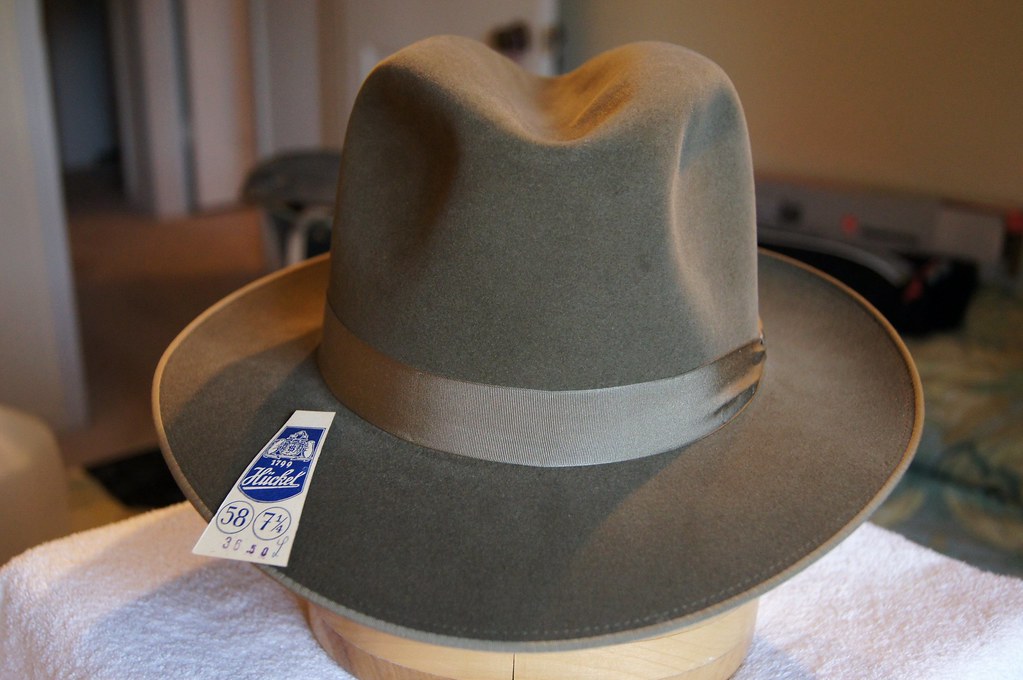
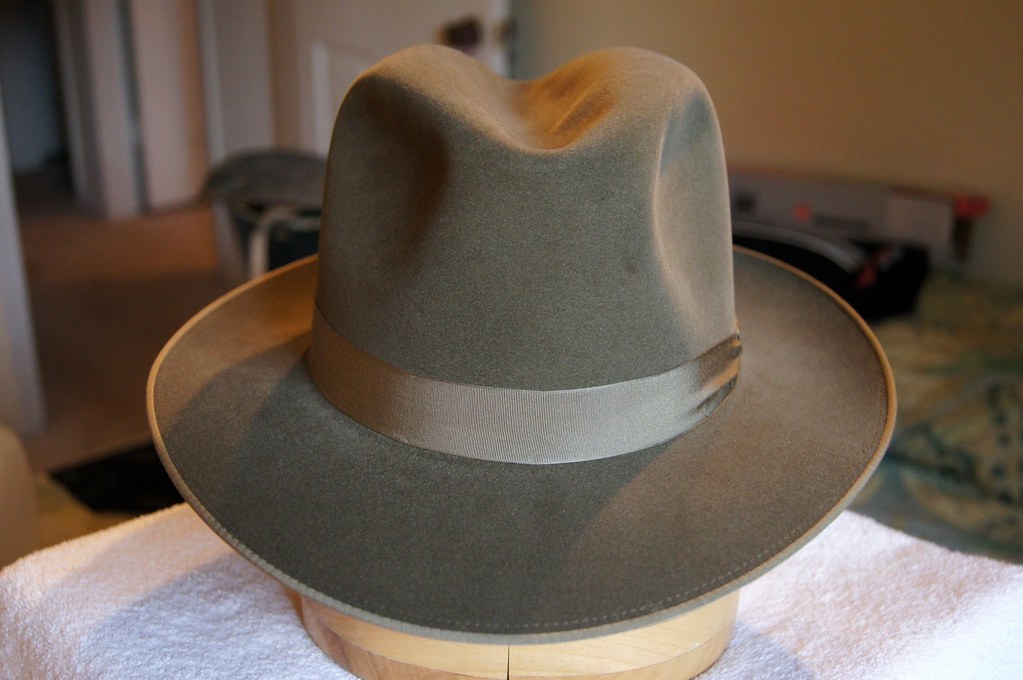

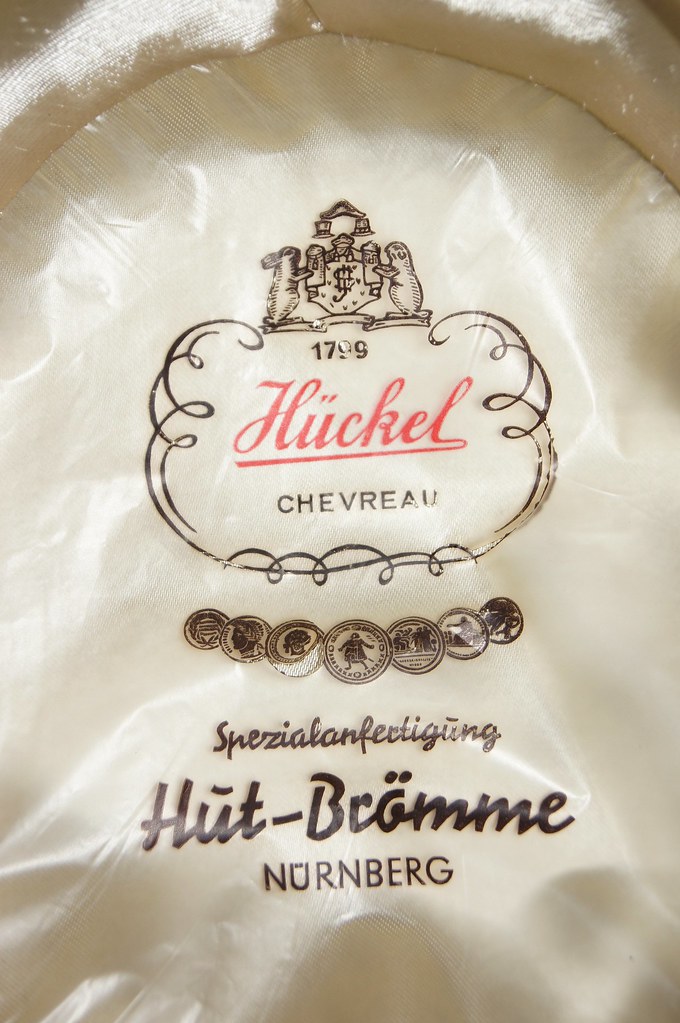
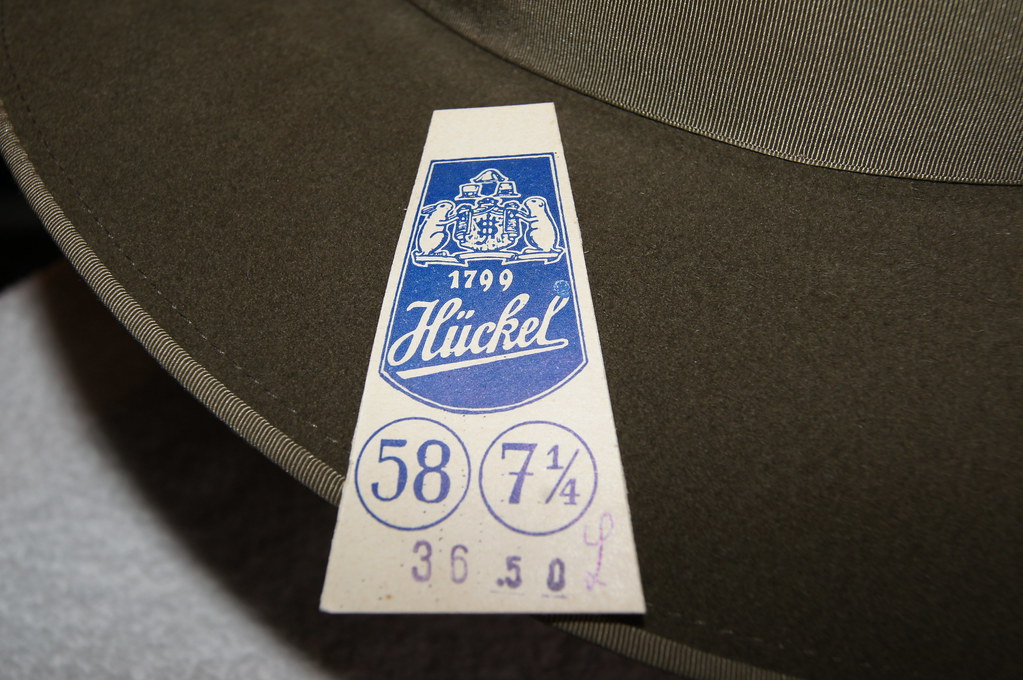
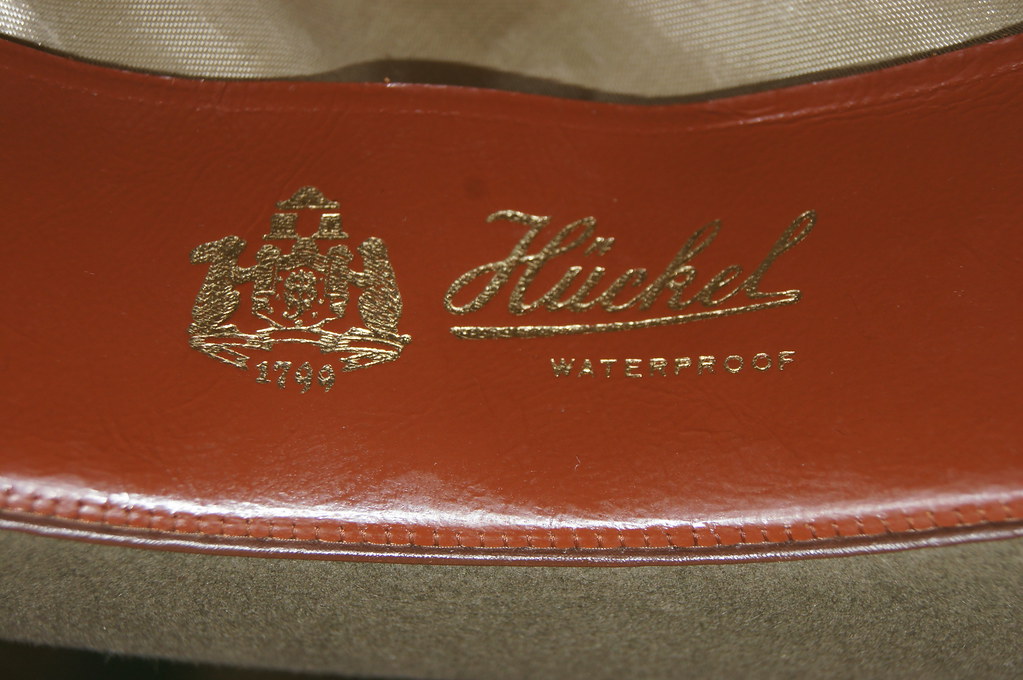
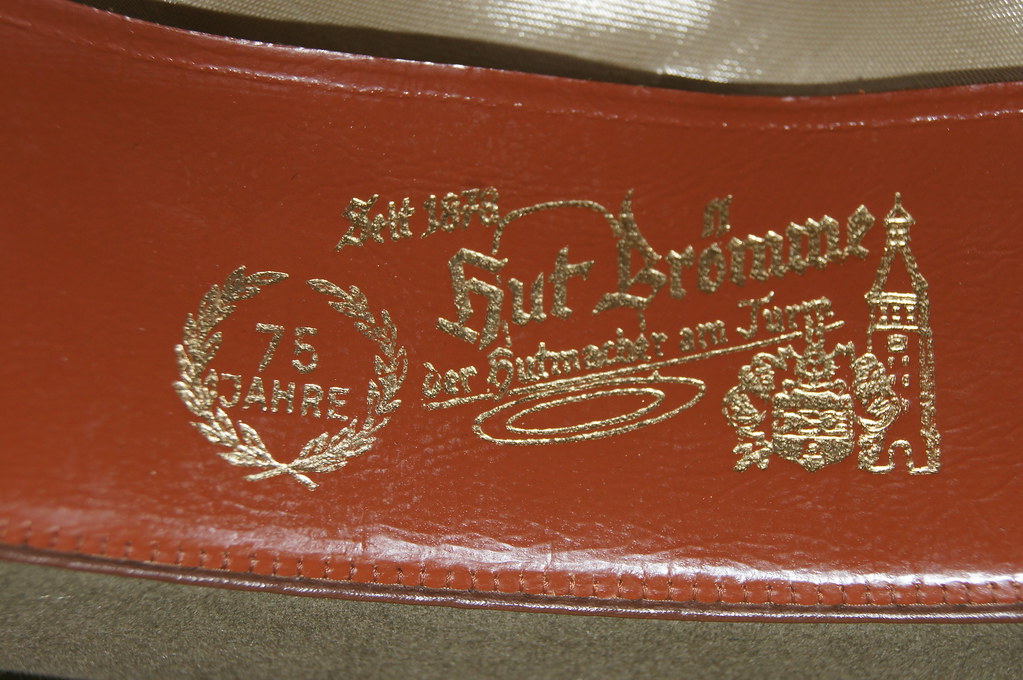
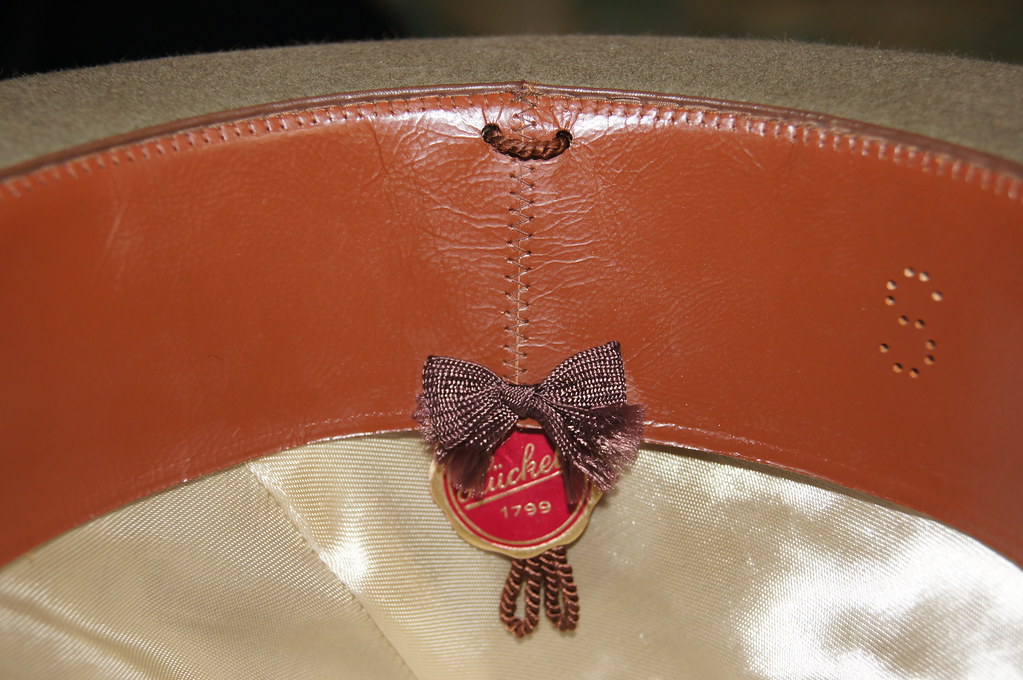
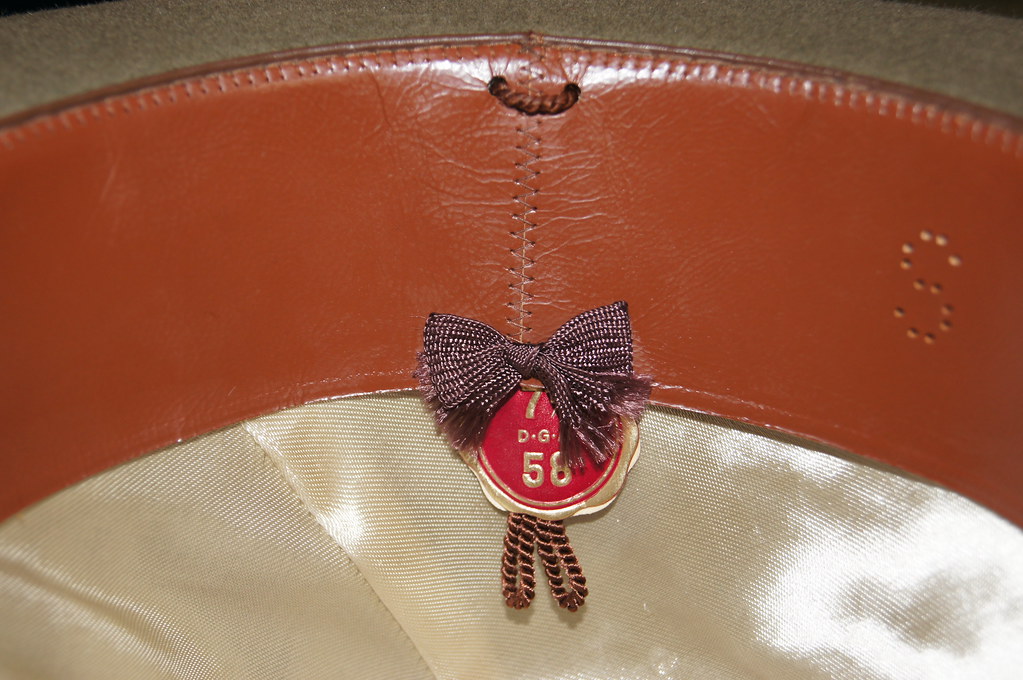
-
This one belongs to Herbert at Hut Neubarth, Augsburg.
"The Salzburger Schnürlregen Hut is probably new to you. It's a velour quality in the typical green.
The Austrians call a certain way of rain (slowly without wind) ,Schnürlregen'. (from Schnur/string)
And here Reindorf offered the original hat... :)"
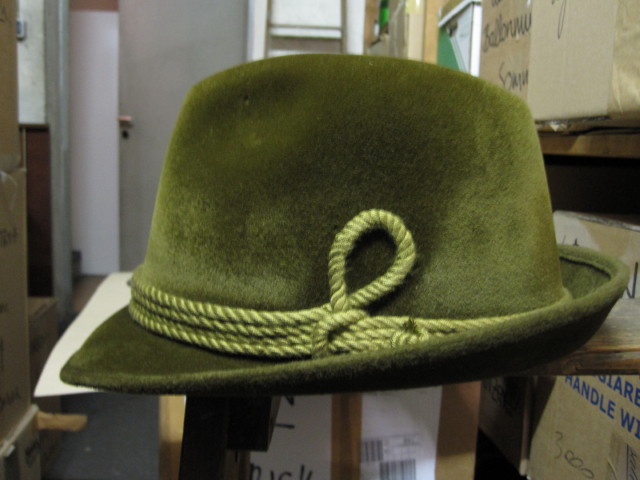


-
This beauty belongs to Herbert at Hut-Neubarth, Augsburg.
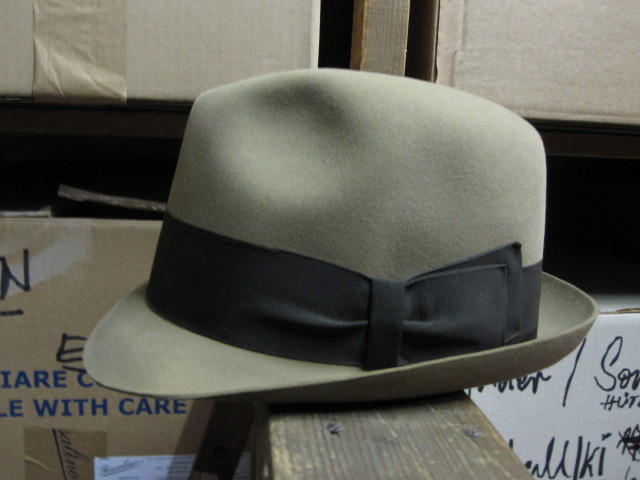
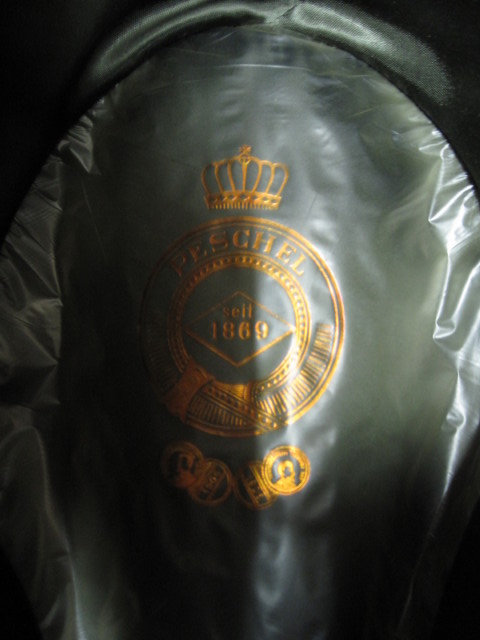
-
This cool + old Wilke hat bucket belongs to Herbert Jennissen at Hut Neubarth Augsburg.

-
Rare Fritz Hückel Weilheim export to Finland. Belongs to Quixote on the FL.
"A 50s Fritz Hückel stingy brim fedora with an awesome full crown and wide ribbon. Absolutely perfect condition. Found it at a thrift shop for 10 euros."




-
This really nice smaller brim Dobesch Homburg belonged to Fritz (Manfred) but he kindly gifted it to me. Thanks Sir!
Dobesch Präsident Homburger Size 58, stamped Sweat Band 1968, in a good condition.

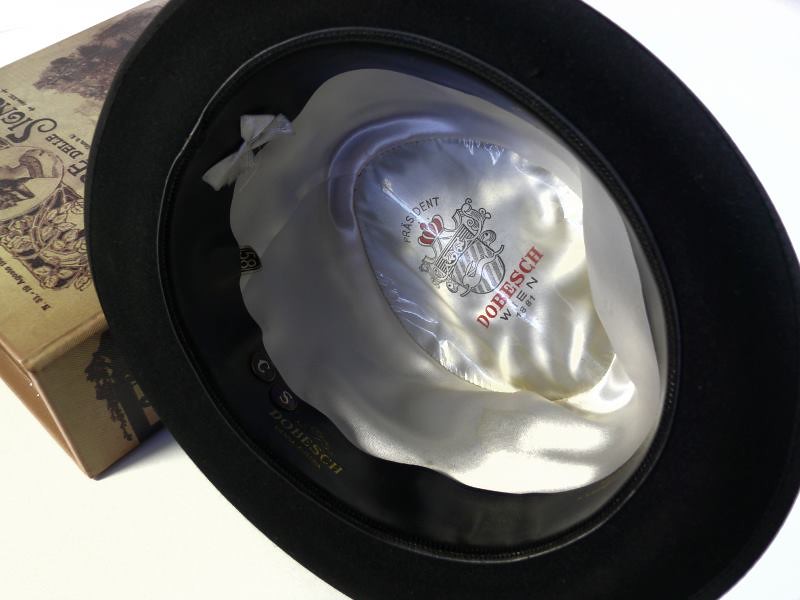
-
I found out that Negretti is a type of wool that can be used to make hats so not the name of the hat company.
History of German Merino strains
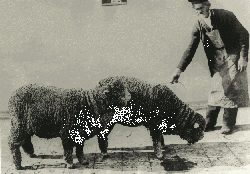
The basis of the German Merino gene pool was founded by limited importation of Merino stock from Spain about 240 years ago to the central German provinces of Saxon and Brandenburg in a temperate climate, with moderate precipitation ranging from 400 to 800 mm/y. The importation to the Electorate of Saxony, as a royal present of best Merinos, represents the nucleus of so-called Electoral sheep (Fig. 1). The appearance of the animals was fairly uniform. The live weight of a sheep was from 25 to 30 kg.
Negretti Merino
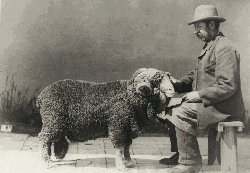
These sheep grew also a very fine wool but showed a low-set compact body. While great stress was laid on the quantity of greasy wool yield and dense wool growth, the tough skin finally developed heavy folds on the neck rump, haunches and tail. The fine wool produced was especially known for its high content of lower solving grease. At the beginning of the 19th century, breeding activities in the former Prussian provinces of Silesia and Brandenburg tended to overcome the disadvantage of overemphasized breeding developments of the Electorals and Negrettis. They tried to combine the adverse advantages of both breeds by combination. This resulted in a fine wool type called the "Eskurial" or "German Thoroughbred Sheep". In the middle of the last century, the production of superfine wool ceased, due to the requirement of longer, coarser and less crimped wool. Breeding of the former type of sheep became unprofitable through insufficient yield and falling prices for finest wool.
-
Manfred, I am going to post the links to the Wilke 75th Anniversary book you found.
This is a very interesting document that covers both wool and fur felt hat making at Wilke Hutfabrik Guben (near Berlin), Germany at the turn of the 19th century. Many interesting photos too.
http://friedrich.song-vision.de/downloads/die_wilkesche_hutfabrik.pdf
Google translation.
-
Manfred, Thanks for posting. I need to do some research on what happened with Wilke after WWII. I am pretty sure a company in West Germany started using the Wilke (originally located in Guben) brand name after WWII.
-
Yes it actually fits. I was very pleasantly surprised by the condition.
-
What does the lable tell us? "Deponirt" (correctly spelled, today "deponiert") meanes registered. It was in use for "regirtered trade" (maybe "trade mark") in Germany, Austria? in the 19c. => could be an indication for pre 1900.
Where does the hat originally come from? It now came from a German Ebay source, but is it originally German?
I tried to get a better close-up of the stemp:
http://i713.photobucket.com/albums/ww136/dreispitz/4372168443_a35d9357b9_b.jpg[/img]"]

So, what do we have?
There is a phonenumber: XXXXXten (indication of town) Tel. (Phone) 61 or 51. Phone networks were established in Germany and Austria from 1881 onwards. A double digit does indicate a very early phone registration. So, we are kind of safe somewhere in the 1880ies.
Is it the stamp of the hatter?
It says "Getreidehandlung" = company that sells crops and cerials. Should be an indication of the owner´s profession.
German or Austrian?
The name is indistinct or read, as well as the town. Could be Joszef Kü?nle.
If it is Joszef as opposed to Josef, it could indicate impreial Austrian provenance.
Would be easy if the stamp were more legible. [huh]
Nothing I could find on the hatter, so far.
Thanks for the great info!
There is also xxxrt Koenig left of the portrait head.
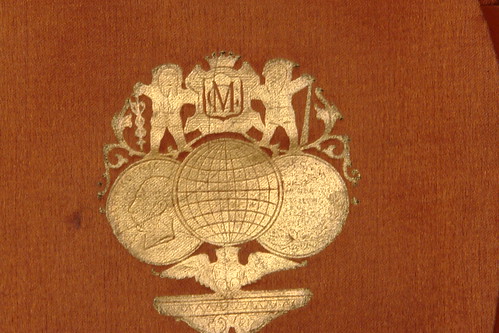
I am going to try to take some better pictures.

-Steve
Steve,
it looks pretty much like King Albert of Saxony - reign 1873 - 1902. If we are dealing with Albert we can narrow down the hat to the period between 1881 and 1902 latest.
http://i713.photobucket.com/albums/ww136/dreispitz/261-427-1plus2-j_260-1.jpg[/img]"]

And we are in the Kingdom of Saxony! Now, who were the main Saxonian hatters of the 19c ? lol
-
This is an old German or Austrian Velour. I think it might be pre WWI but no manufacturer mark. The crown was over 6 inches open. I am not sure if it had a liner. The Velour is very beautiful with some other colors mixed in with the black.
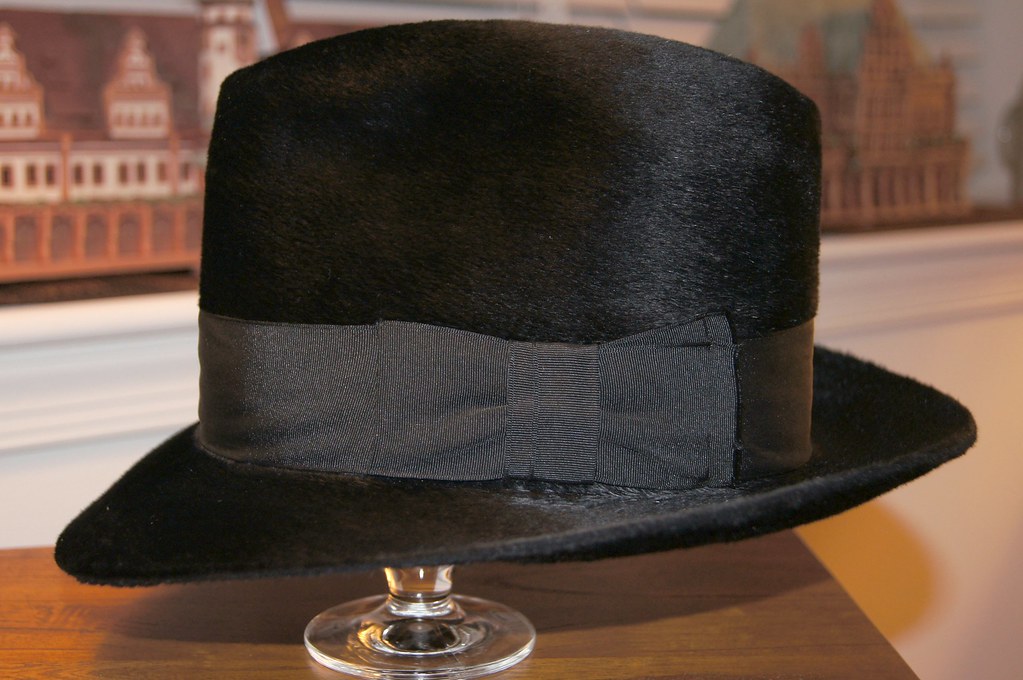
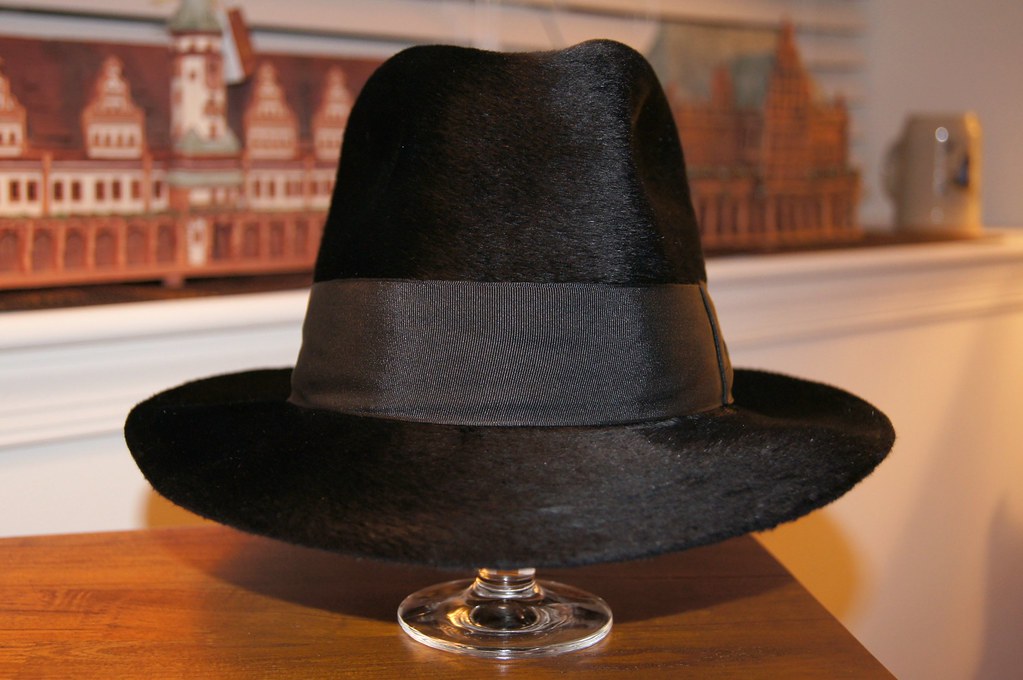
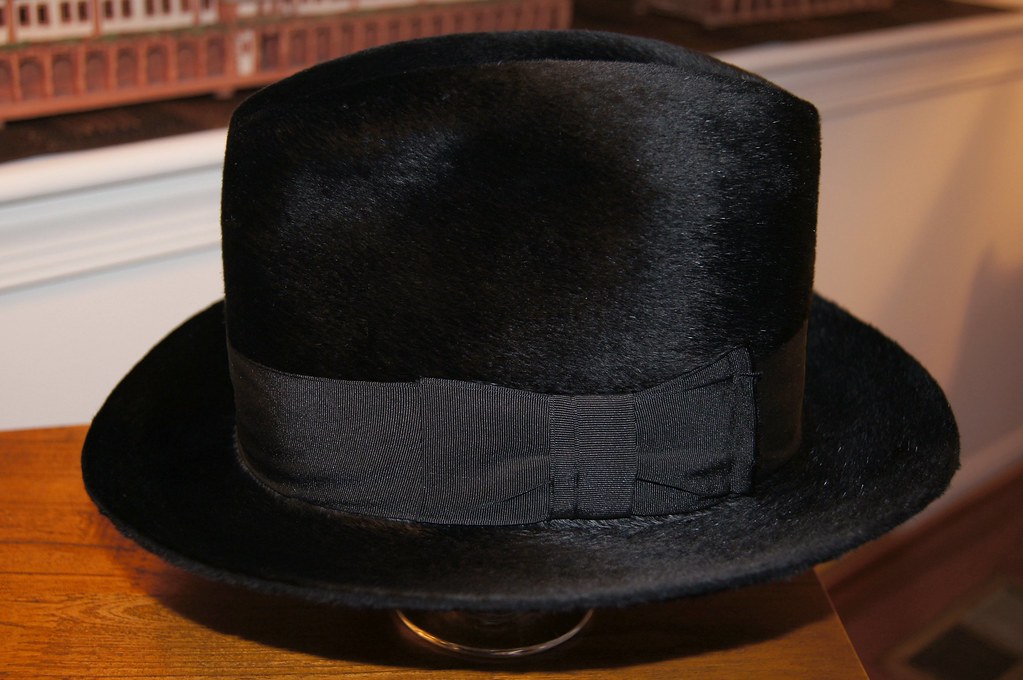
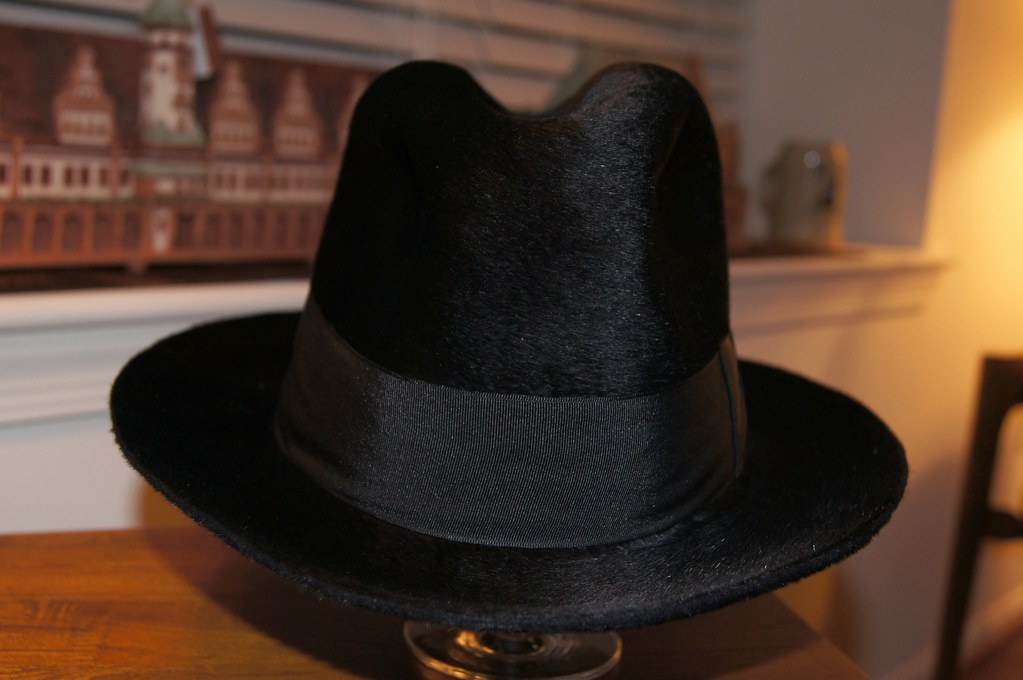
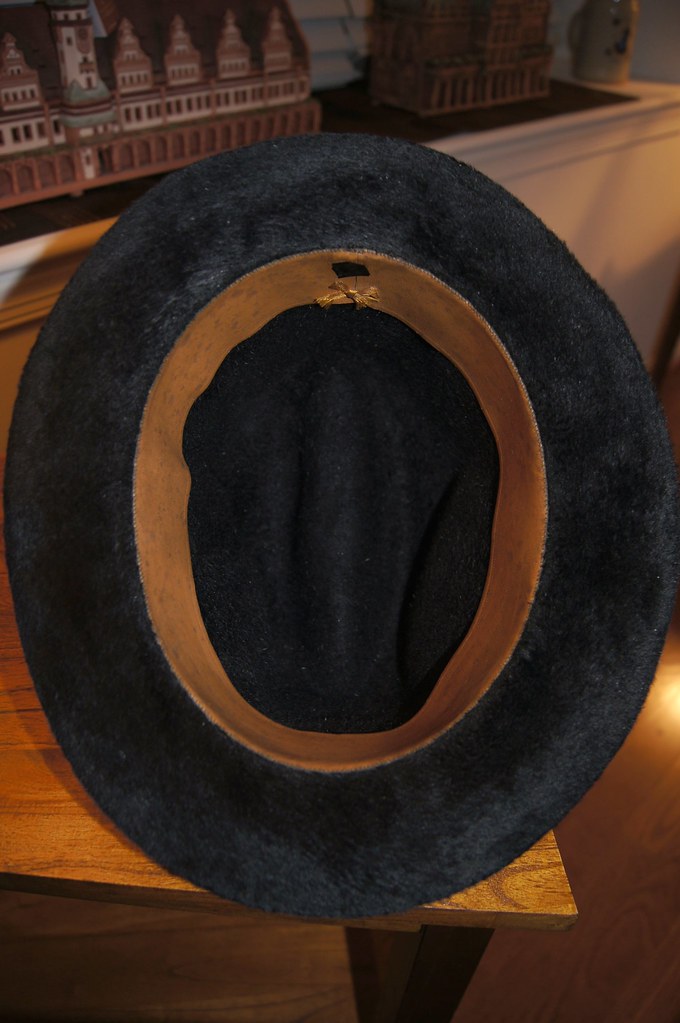
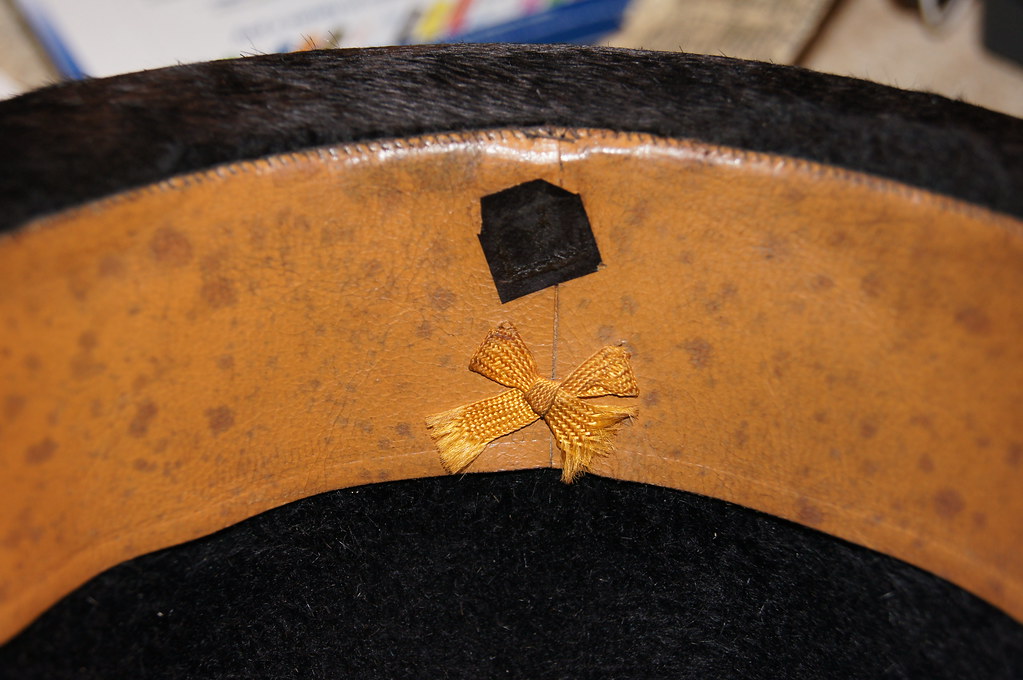

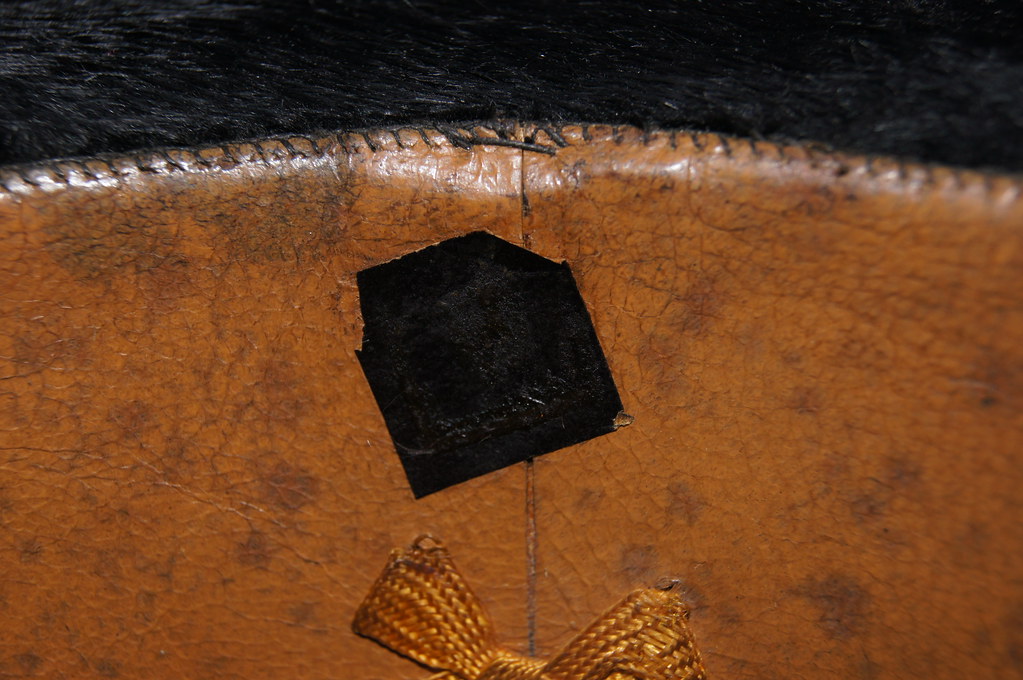
-
Thanks! I haven't visited Wegener so would be very interested in what you find. I was told they no longer have a hatter available to make special order hats like the dark blue Velour posted in this thread.
-
Mayser Hat. The condition is mint. The Ribbon is multicolor. This one belongs to Fritz (Manfred).
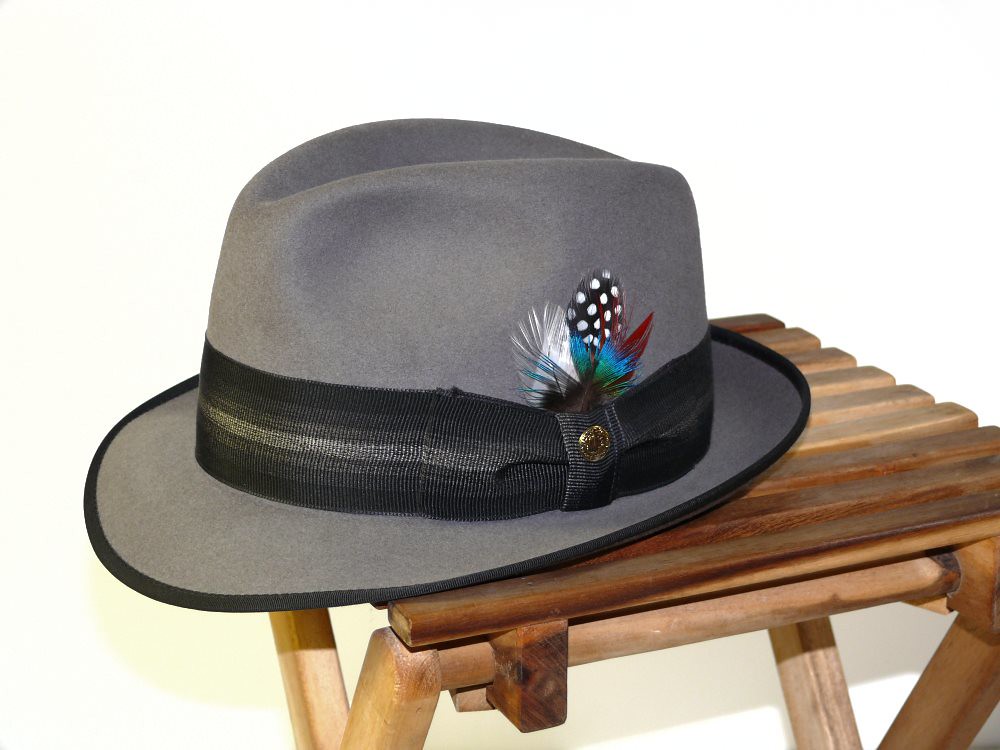
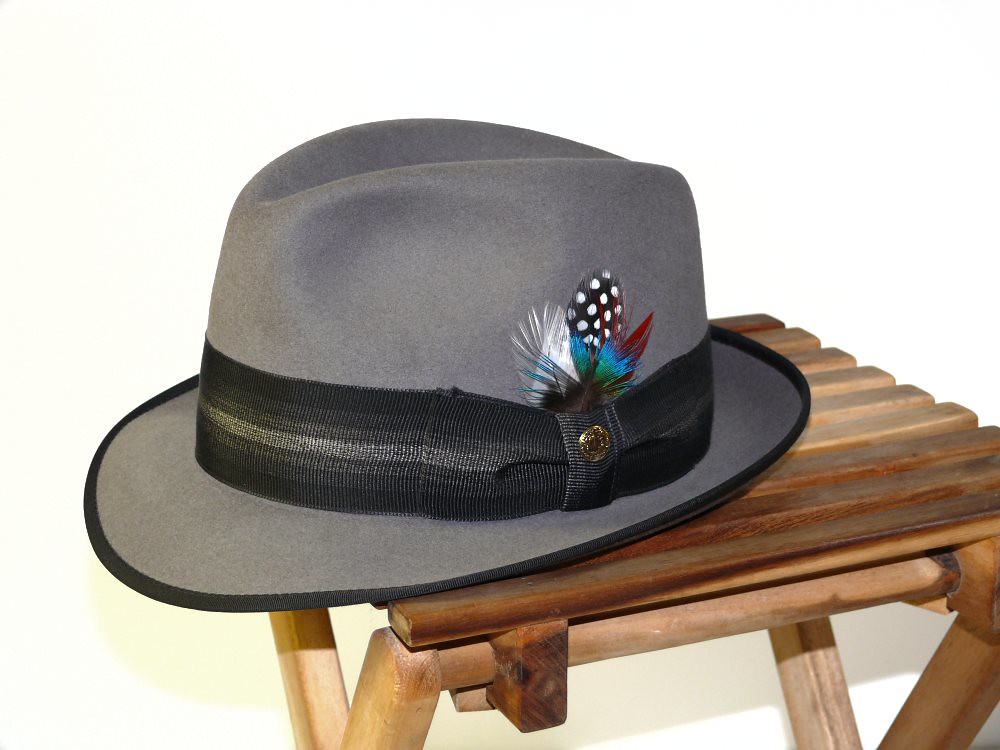
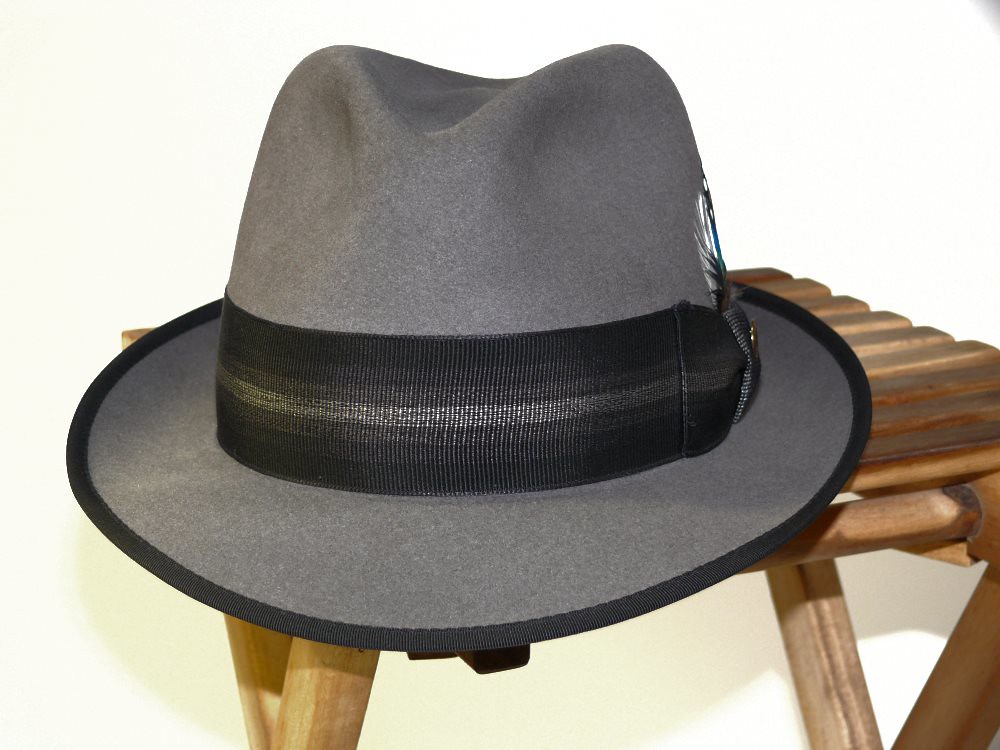
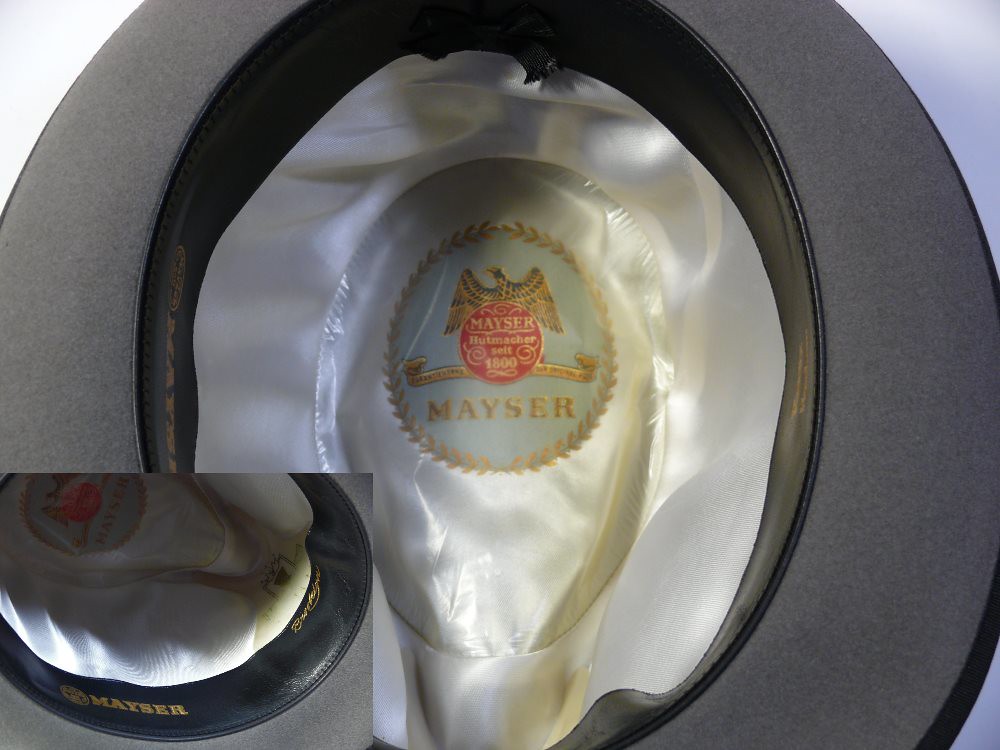
-
Wegener furfelt Hat. This one belongs to Fritz (Manfred). Don't see many of these older Wegener Fedoras.
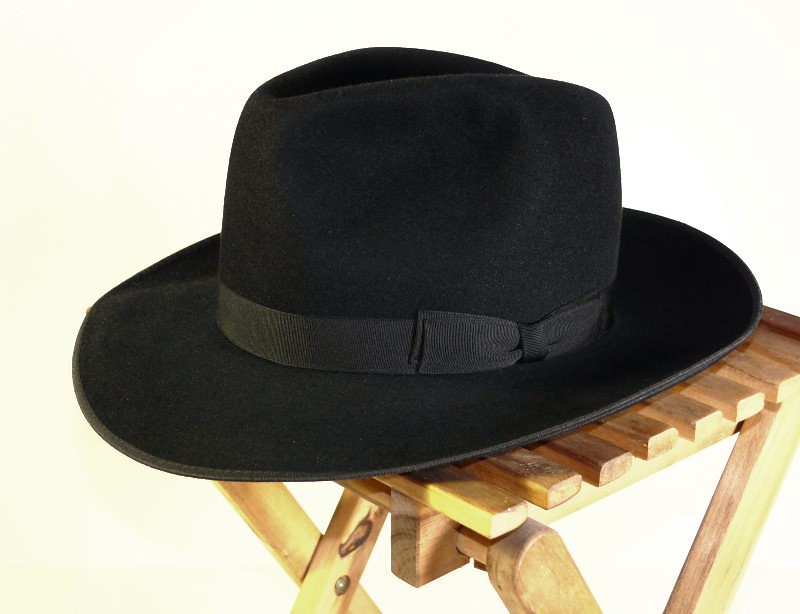
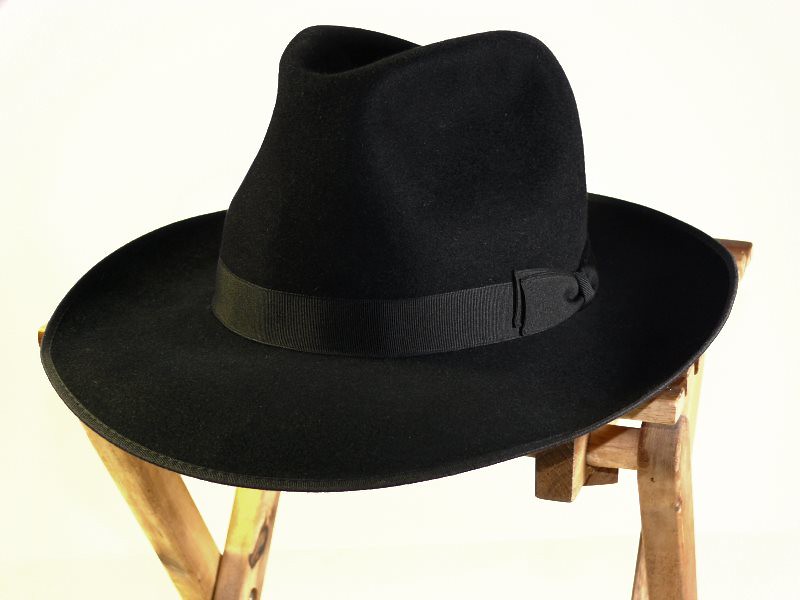
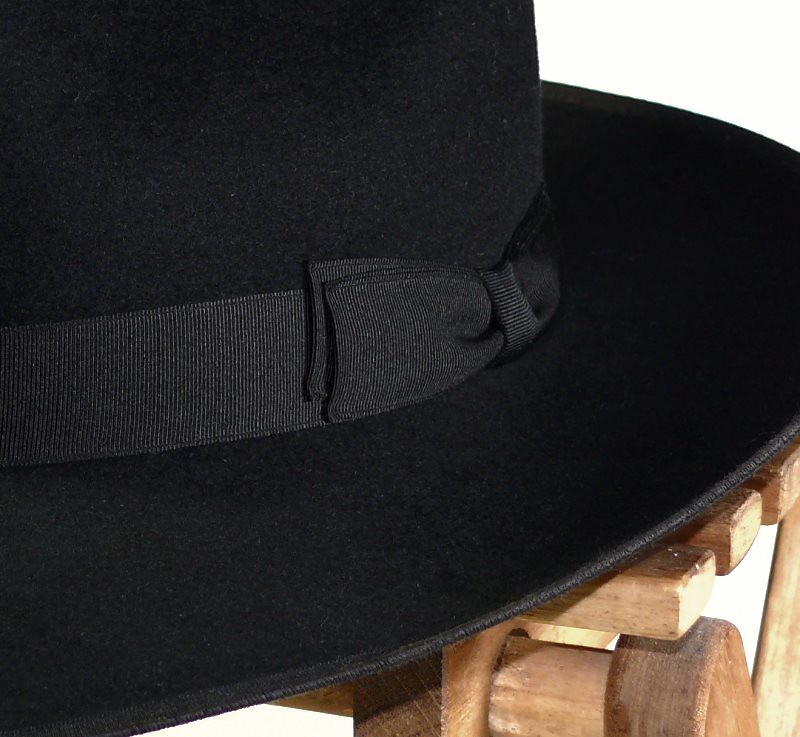
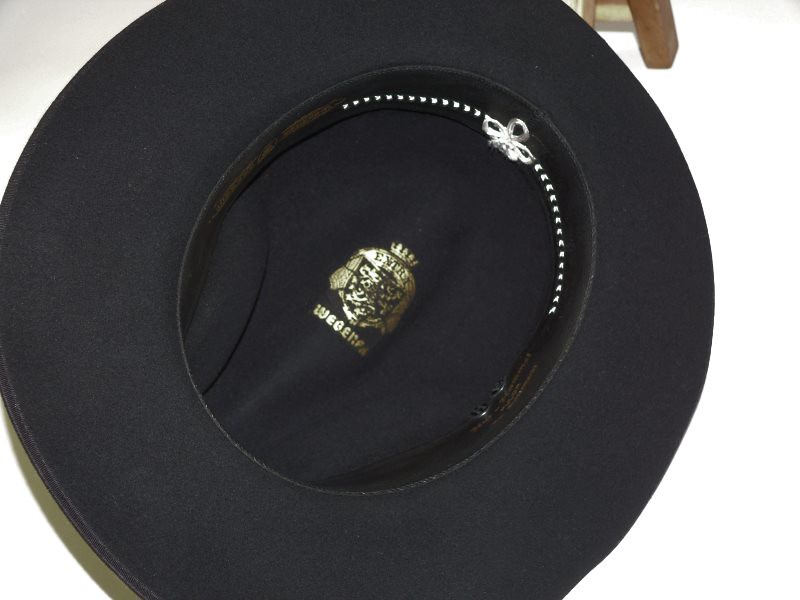
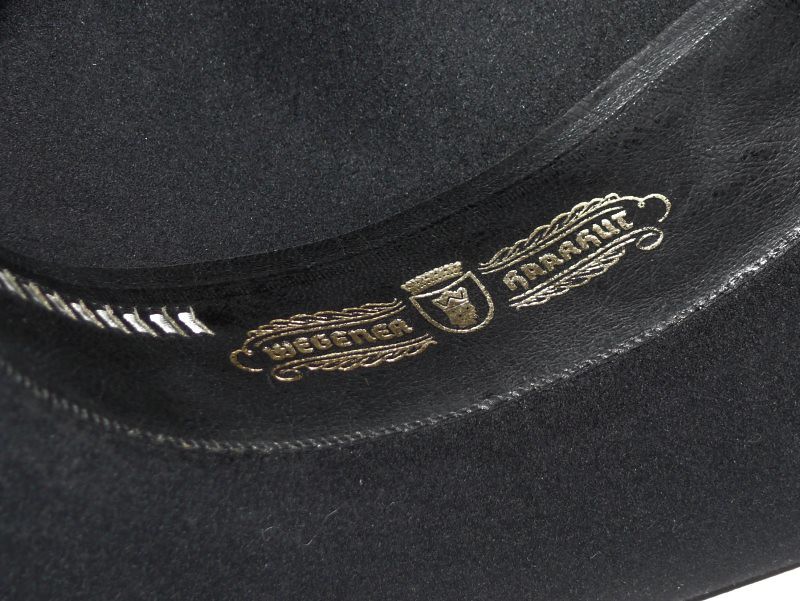
-
Rehfus history found by Fritz (Manfred).
here is a Google Translation of the History of Rehfus.
Two step-brothers Rudolf Ferdinand and John Carl Rehfus, who had learned both the merchant craft, built in 1867 in the village of Kehl-hat factory Rehfus.
The hat factory Rehfus'sche could quickly claim due to the excellent quality of their hats on the market. 1895 the company employed about 170 employees. Initially, only hats made of rabbit hair and rabbit hair were made. With the start of the new century, the fashion changed and the Hatter Rehfus'schen rose successfully to the production of lightweight stiff hats (popularly known as melon) around.
Charlie Chaplin made the melon acceptable and gave the models Rehfus'schen »Aerifor," "paradox" and "Zephyr" good sales. Even in South America, Holland, England and Scandinavia was one of melons throat. "Furs are sold in Leipzig, in stiff hats Rehfus in Kehl," read a slogan from England. The racer from the house Rehfus was the "Upper Country", a hat made of waterproof tumbled fur, found mainly in the hunting circles very popular and was made after the First World War as a normal Straßenhut in all colors and shapes.
1890, Carl-Johann Rehfus leads the business in hand. He was ten years ago joined the company as general manager. His second passion next to the company was hunting. The family owned a large area on the small Kronenhof and Carl-Johann was touched as a boy with his friend, the son of the Upper Hunter Fritz, through the extensive coppices. Later he moved into distant climes, to moose hunting or bear hunting by Norway to Russia.
Under the pseudonym of "Upper Countries", he published numerous books that have become classics of hunting literature. His passion was so great that he did sign in 1907 the additional name "Upper Country" at the Karlsruhe Department of Justice.
Carl-Johann Rehfus Oberländer died in 1926. In his footsteps, his son Carl-Hans, who had joined the company in 1908 and how his father was an avid hunter.
The Third Reich and the Second World War also went to the hat factory Rehfus'schen not go unnoticed. The principal walked in, were now ordered uniform caps. However, when it was linked by a major contract with the condition to join the Nazi party, put the hat factory Rehfus the production of these caps without further ado.
After the war, until 1951, the work can be resumed. During the occupation, the factory had been looted and damaged, only months-long cleanup and a credit under the Marshall Plan could start production again. But the fashion changed again and brought an entire industry to stumble - you went (s) now without a hat. In 1963, the Rehfus'sche hat factory closed its doors forever. The competition did not fare any better: in 1970, of the 30 hat factories in the country that housed the entire production line under one roof, remains only five.
Carl-Hans-Rehfus Oberländer died in 1976. The last representative of the traditional family is the now 88-year-old hat maker, interpreter and photographer Maria Rehfus-Oberlander, who returned after the death of her father's throat in order to take care of her mother Alice.
Today the gatehouse of the former hat factory Rehfus'schen sitting cross-border and European institutions. The inn "Rehfus" on the main street was demolished 1954th The site now serves as the post office parking lot.
-
Rehfus, 1954. This beauty belongs to Fritz (Manfred).
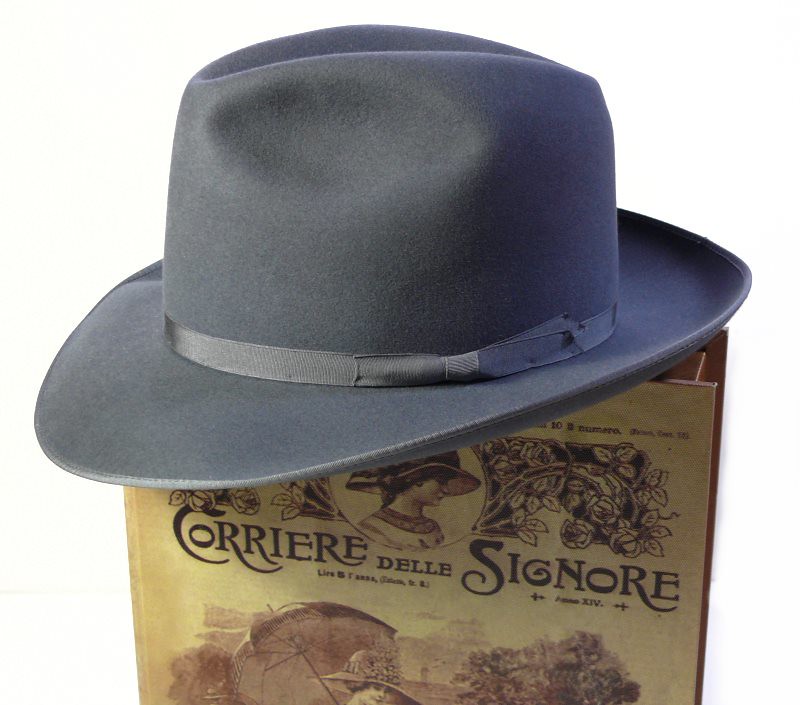

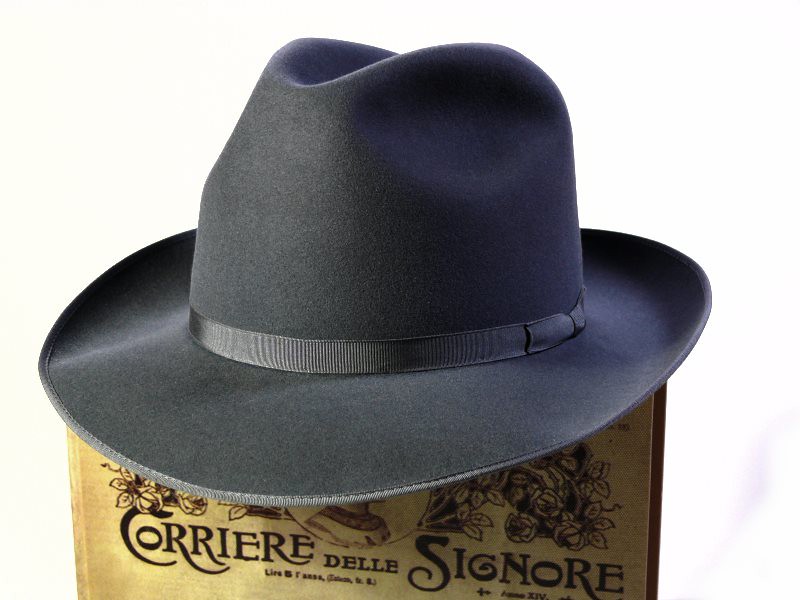
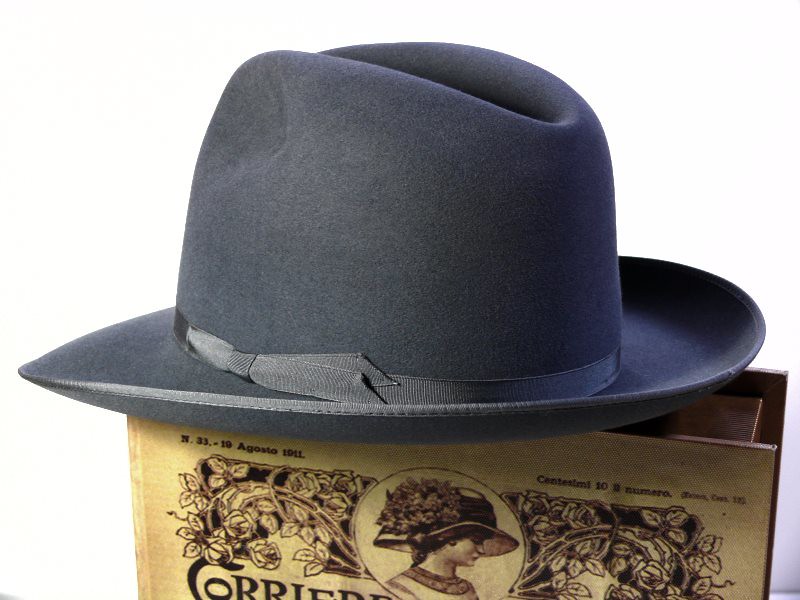
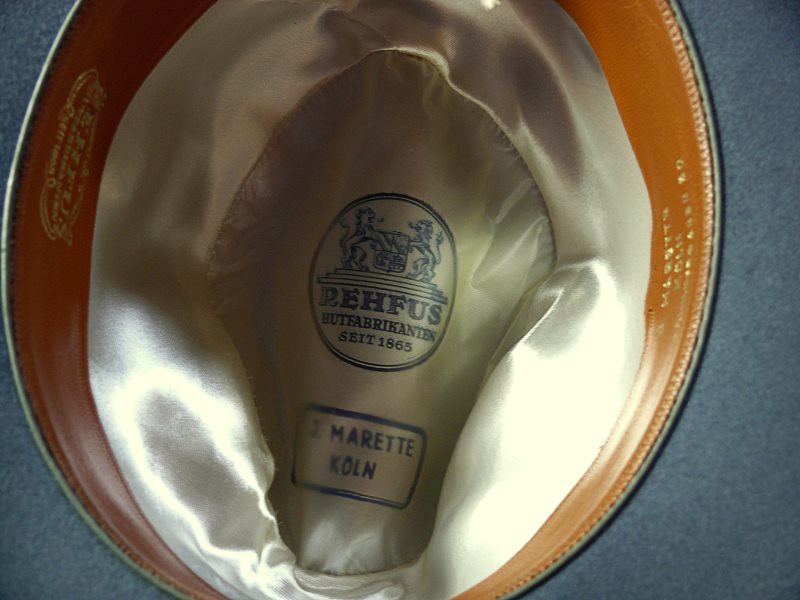
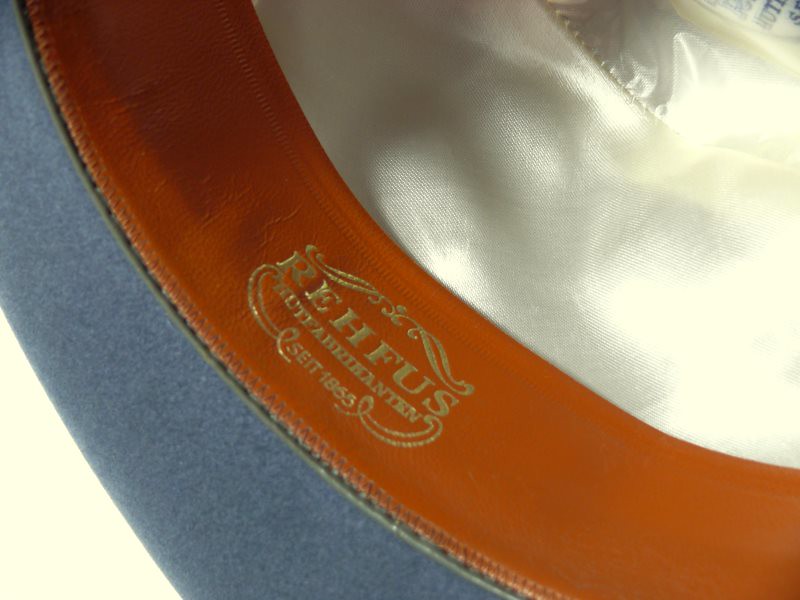
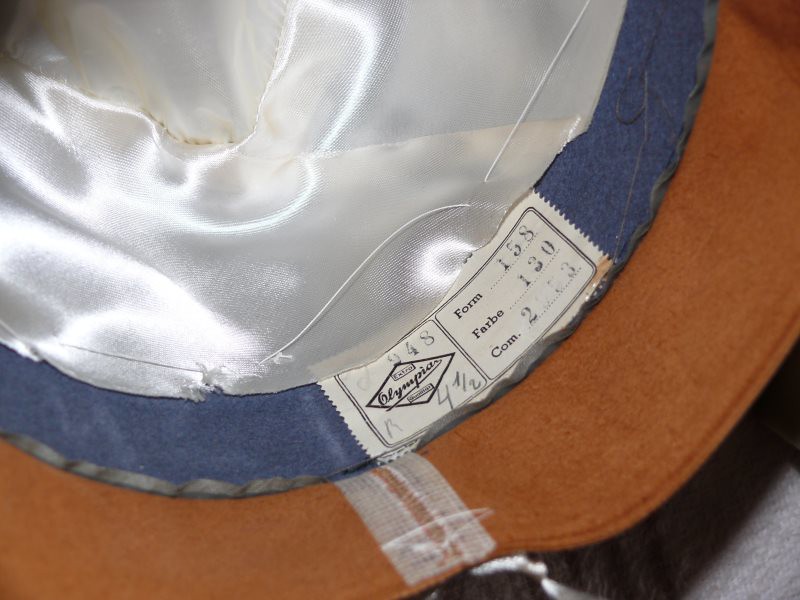

-
Mayser Fedora from 1957. This one belongs to Fritz.
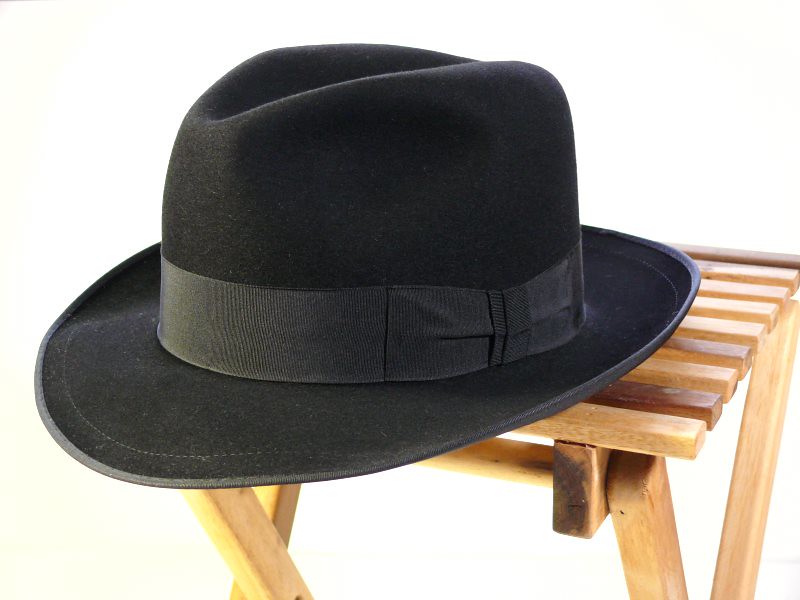

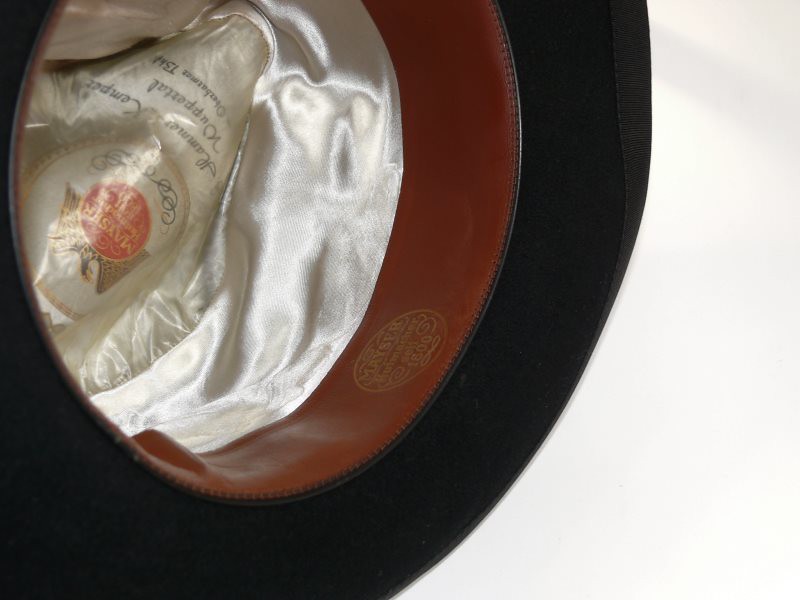


-
P. & C. Habig ZYLINDER Hut + case, size 58cm, 1934, excellent condition.
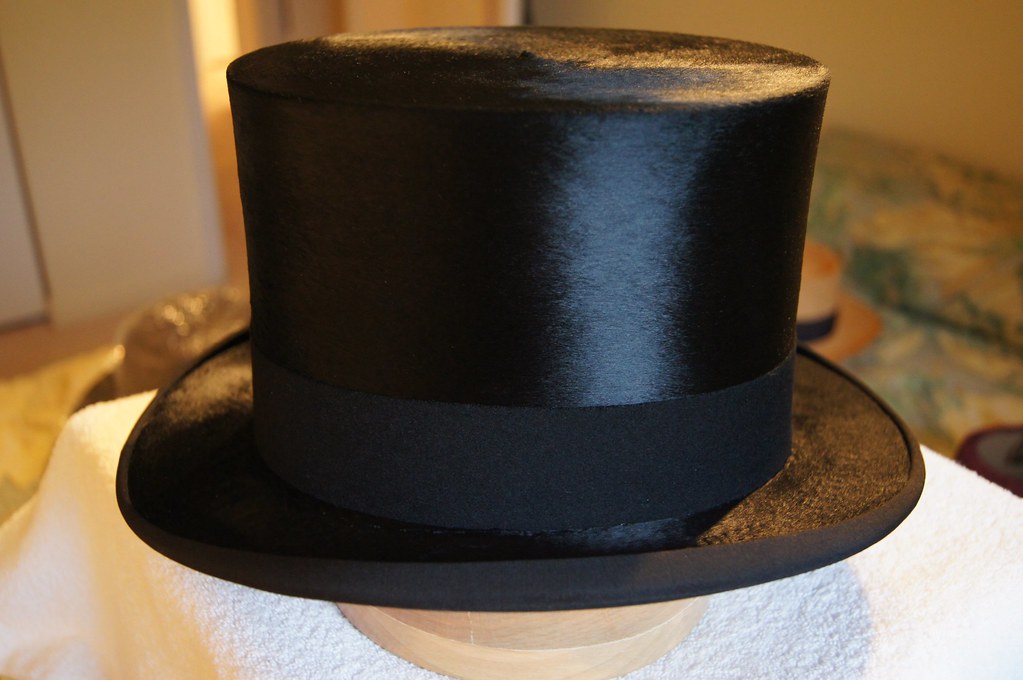
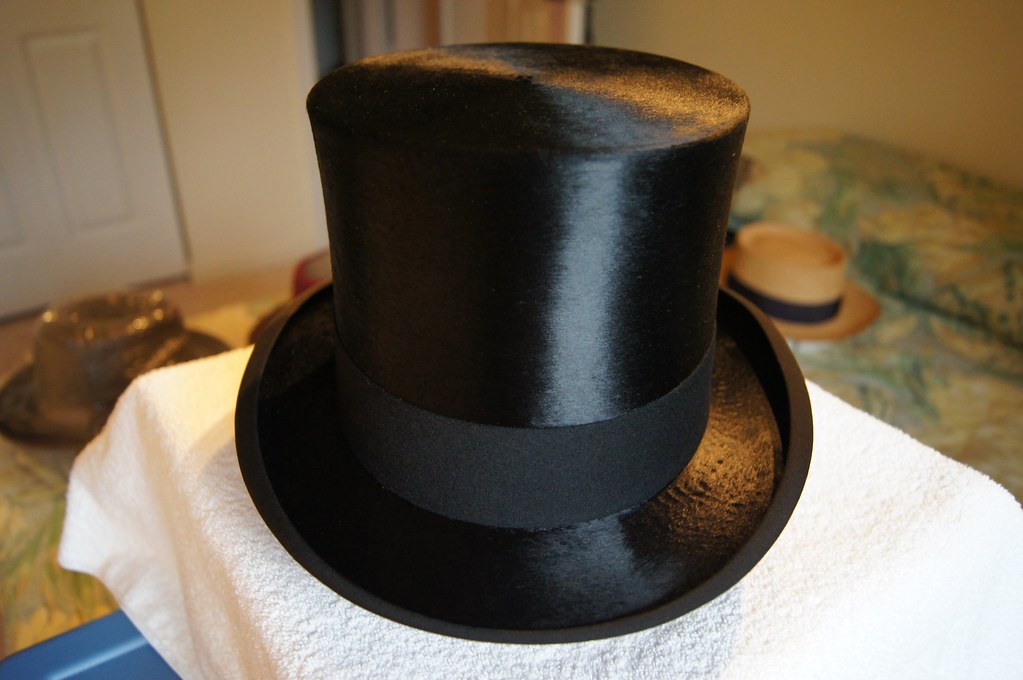
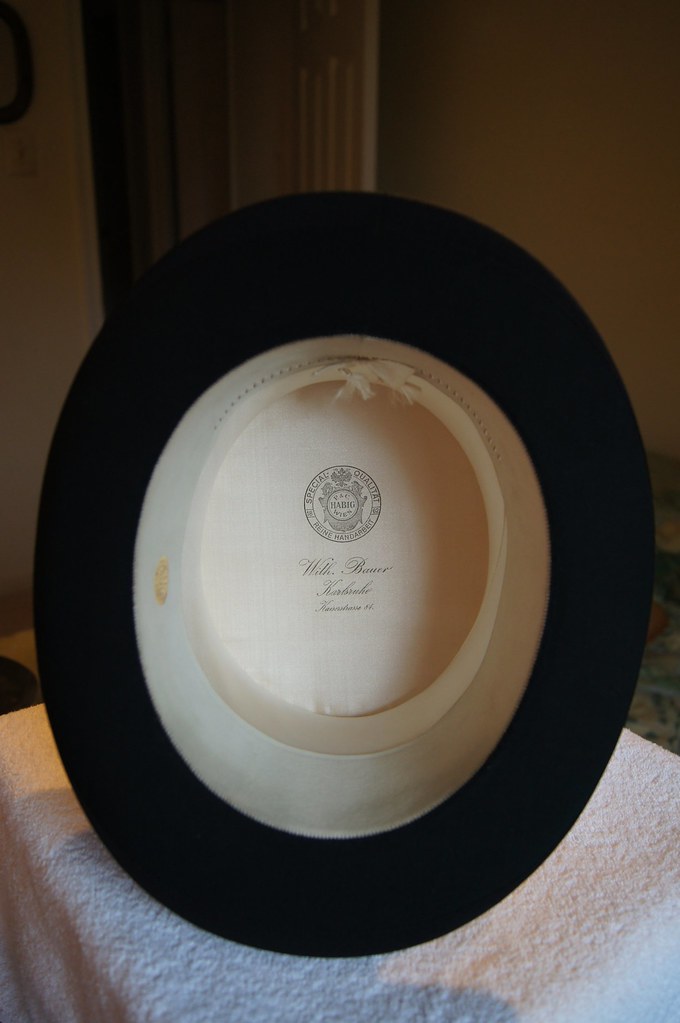

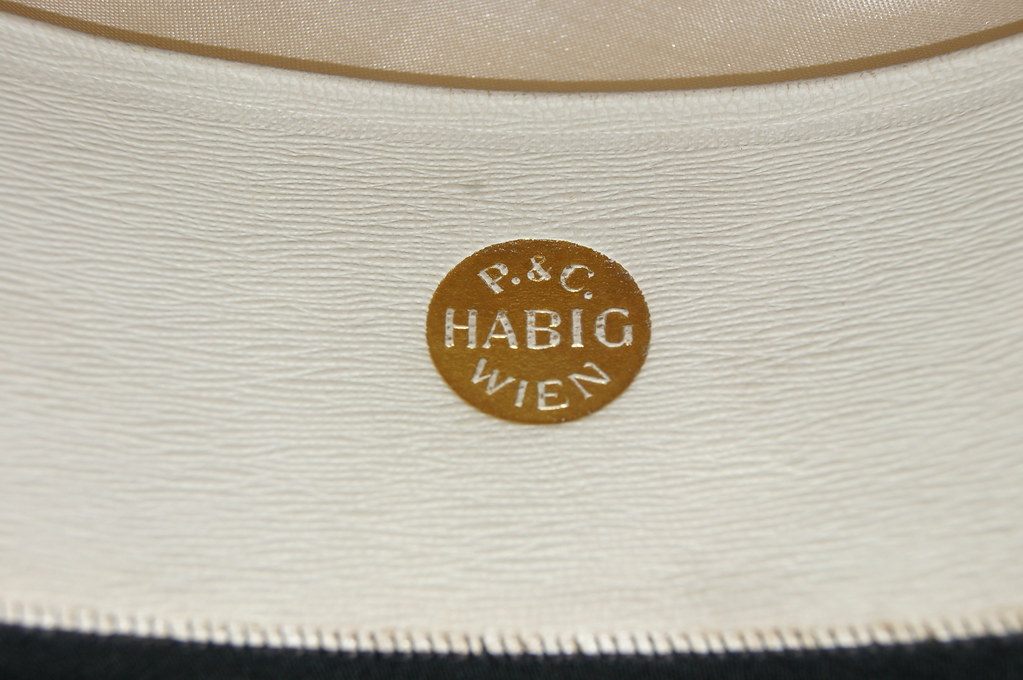
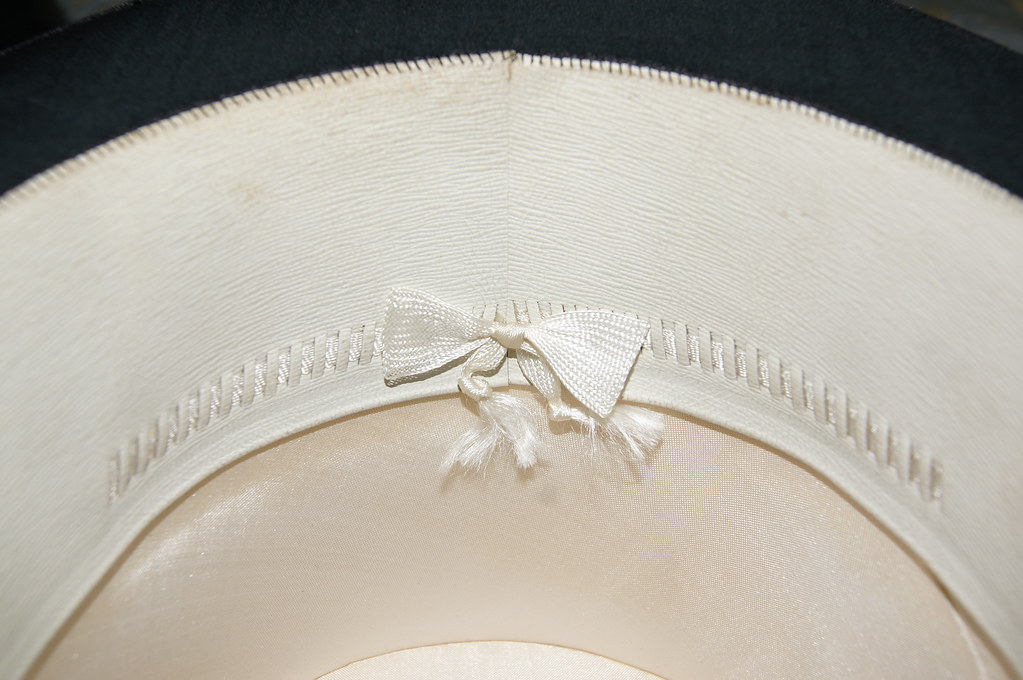
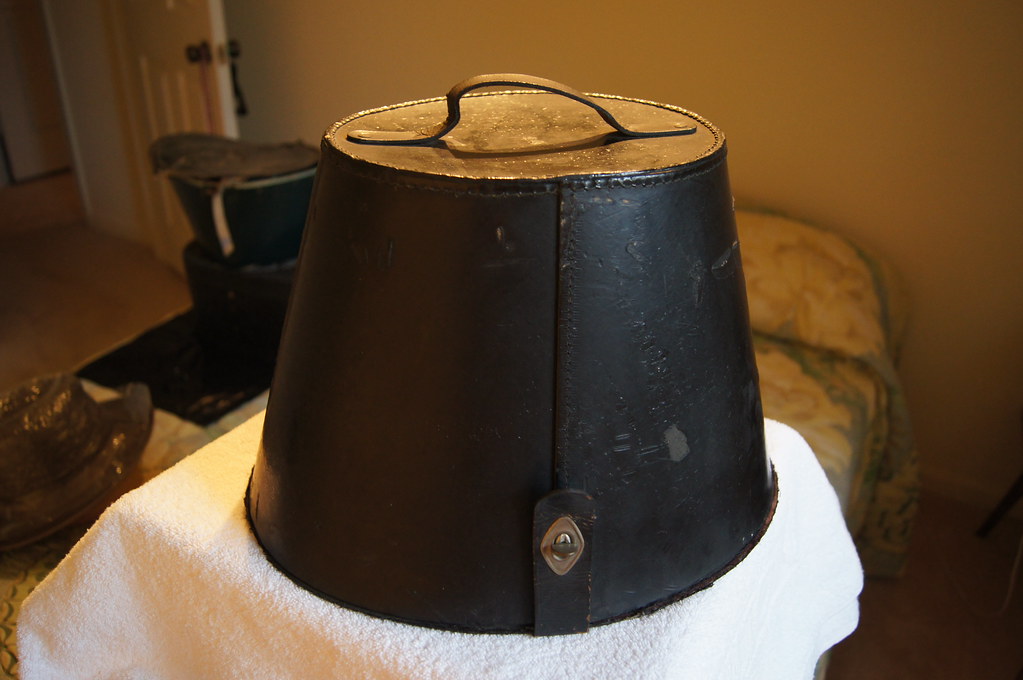
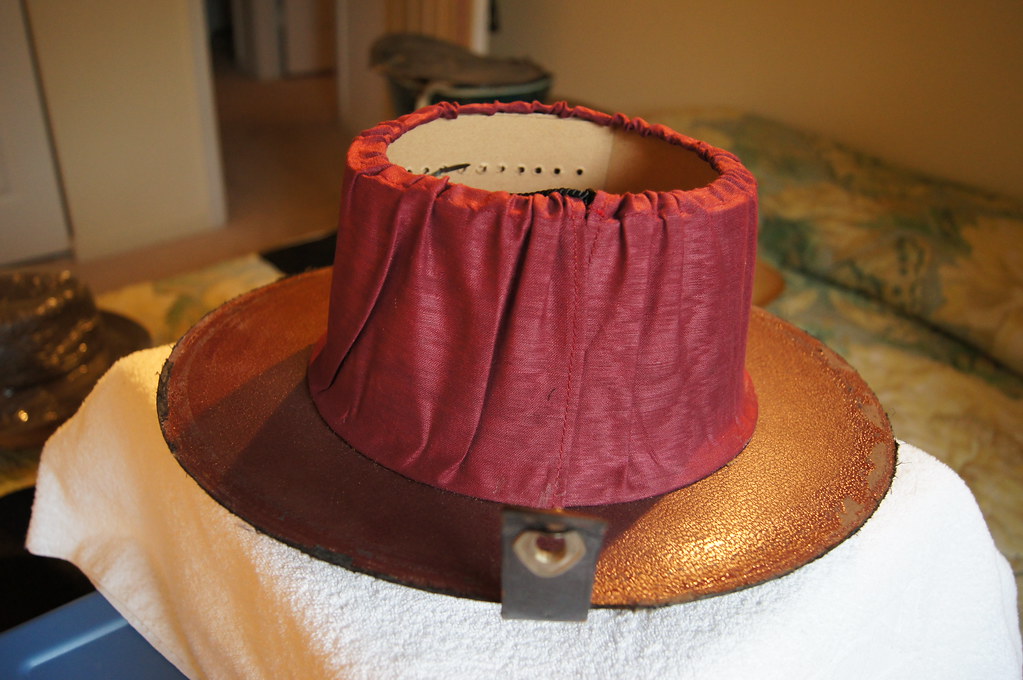
-
Rockel promo pocket mirror. Not sure of the date but could be 1950s.
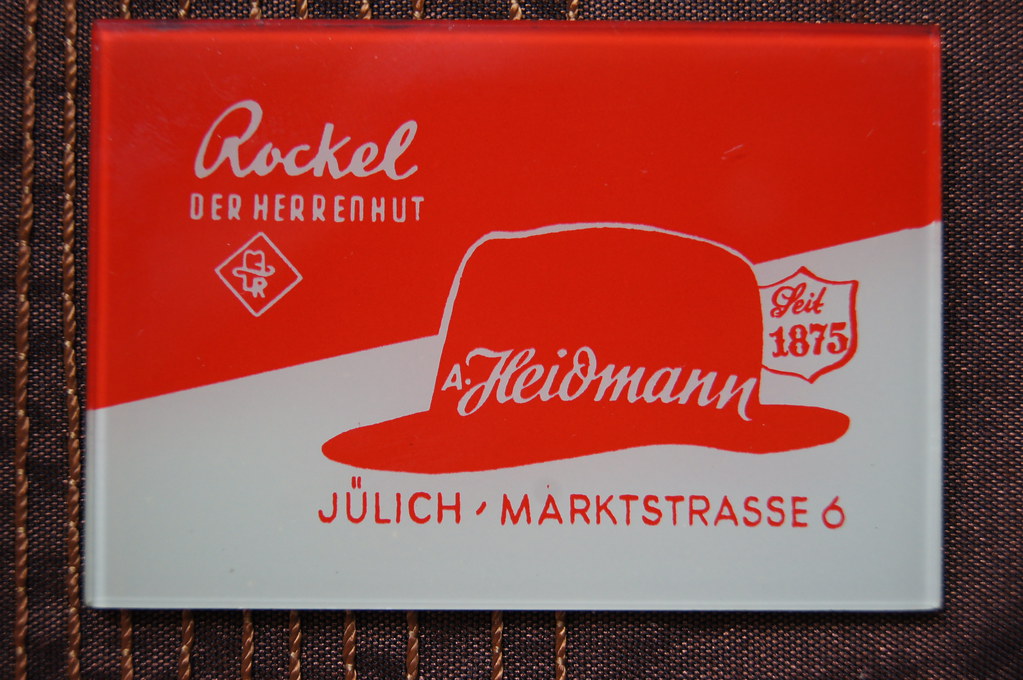

-
Mayser Spezial, gray, size 60cm, mid 1950s. I picked this one up for around $16.50 including shipping.

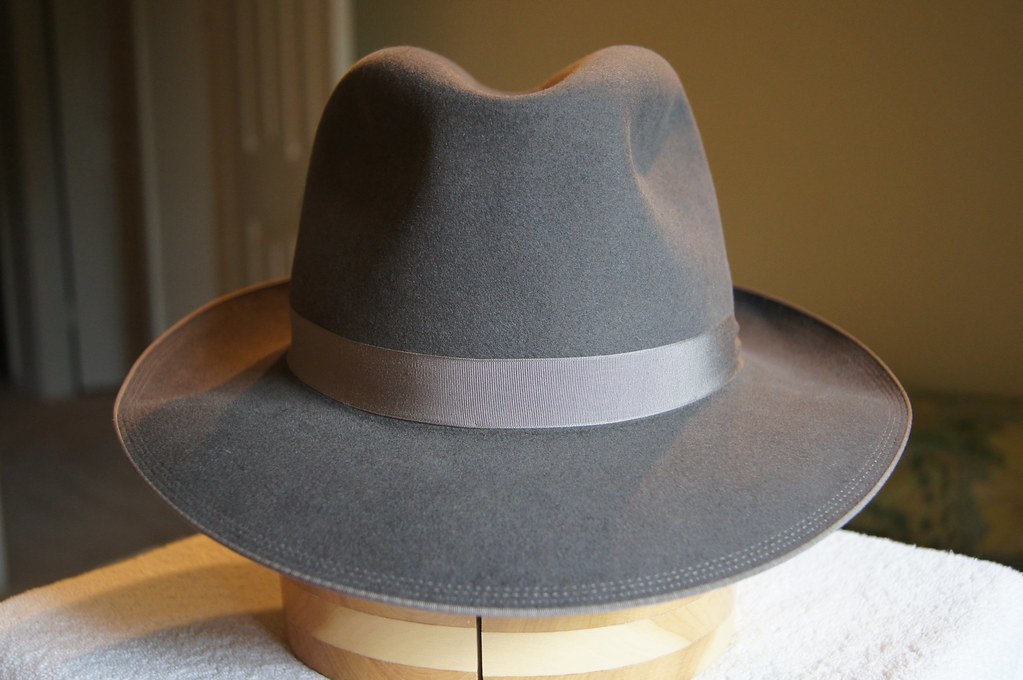
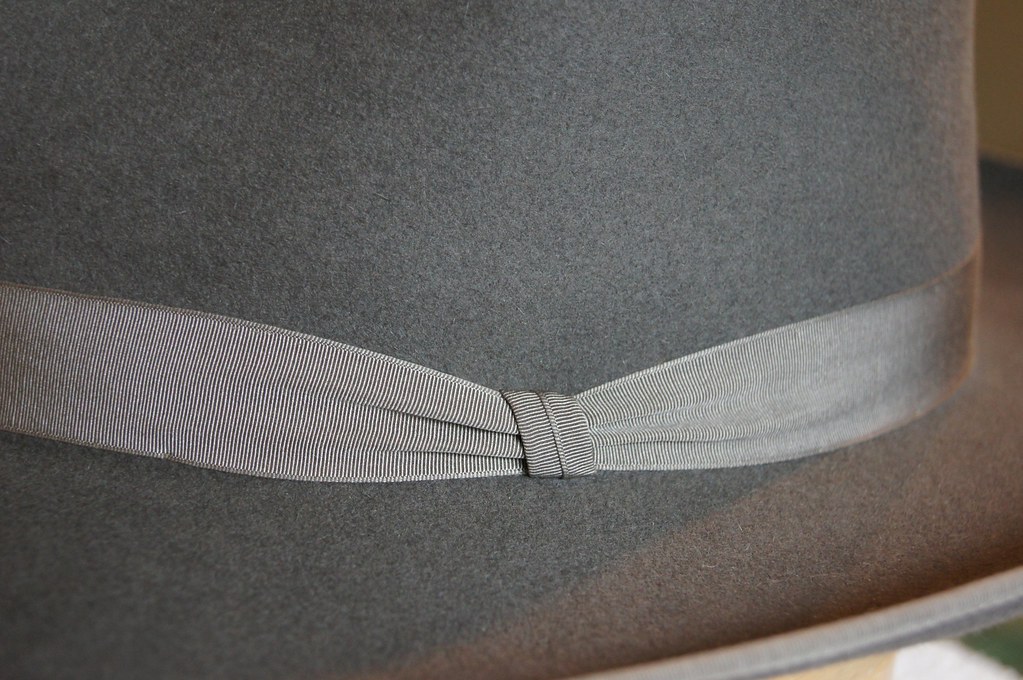
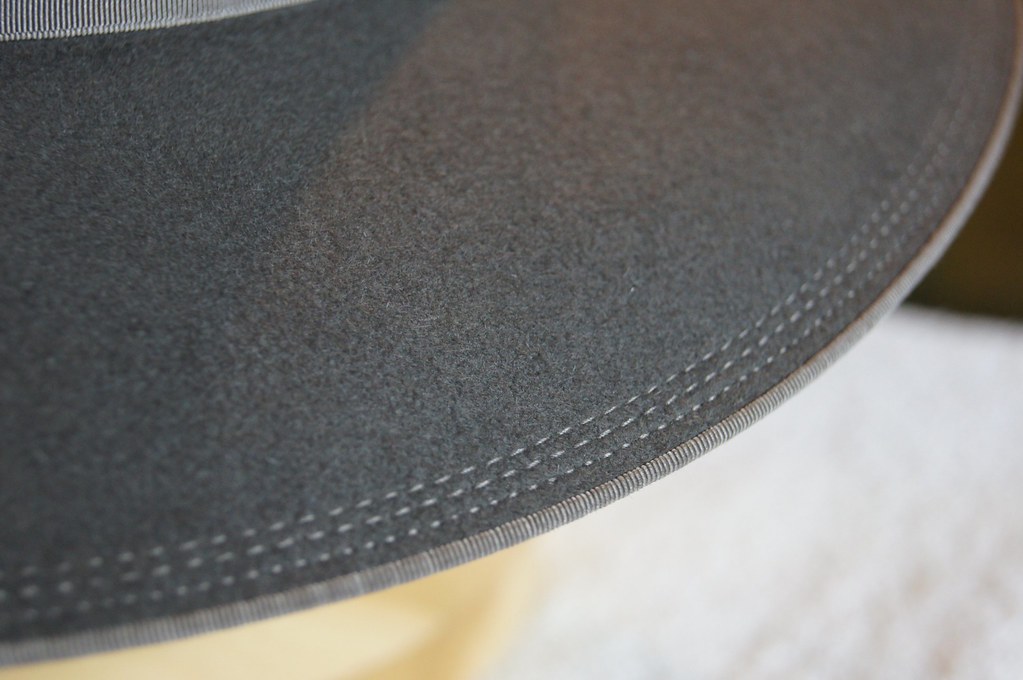
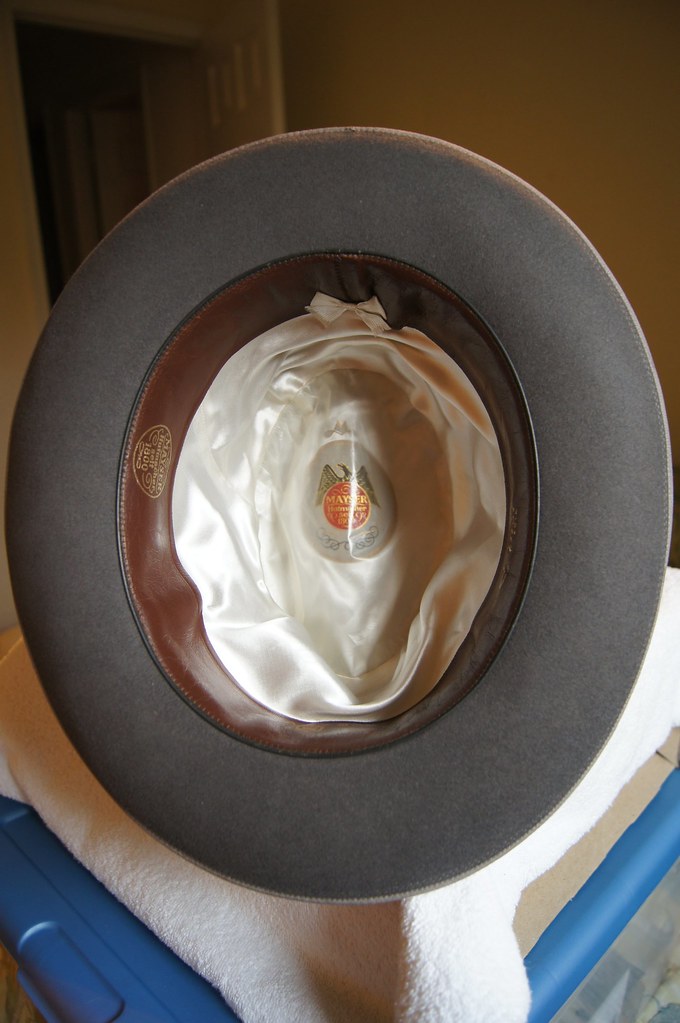
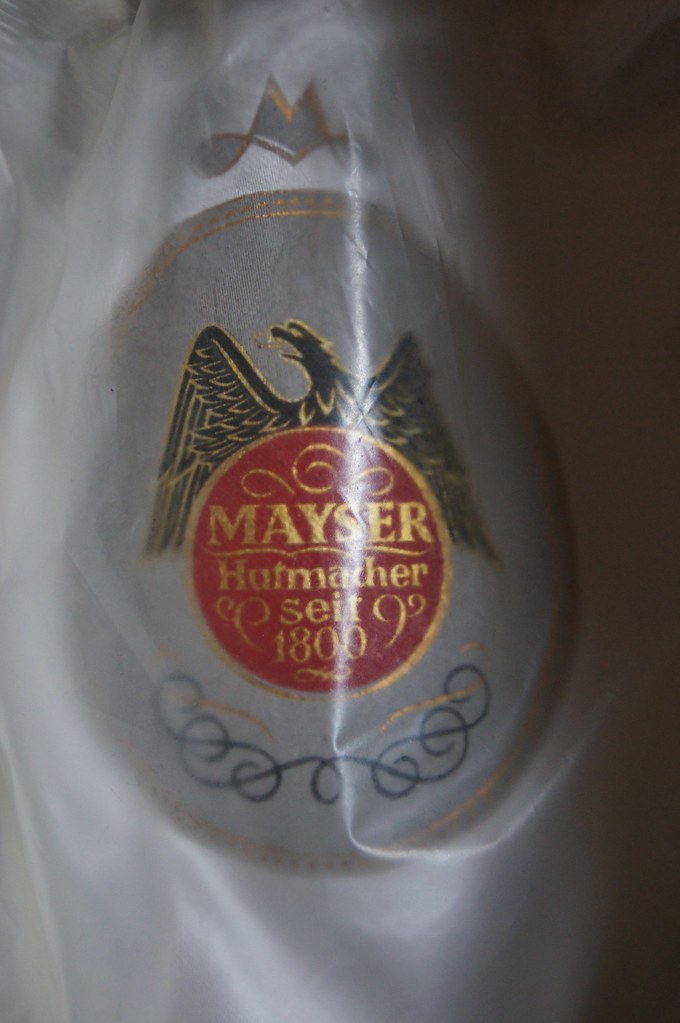
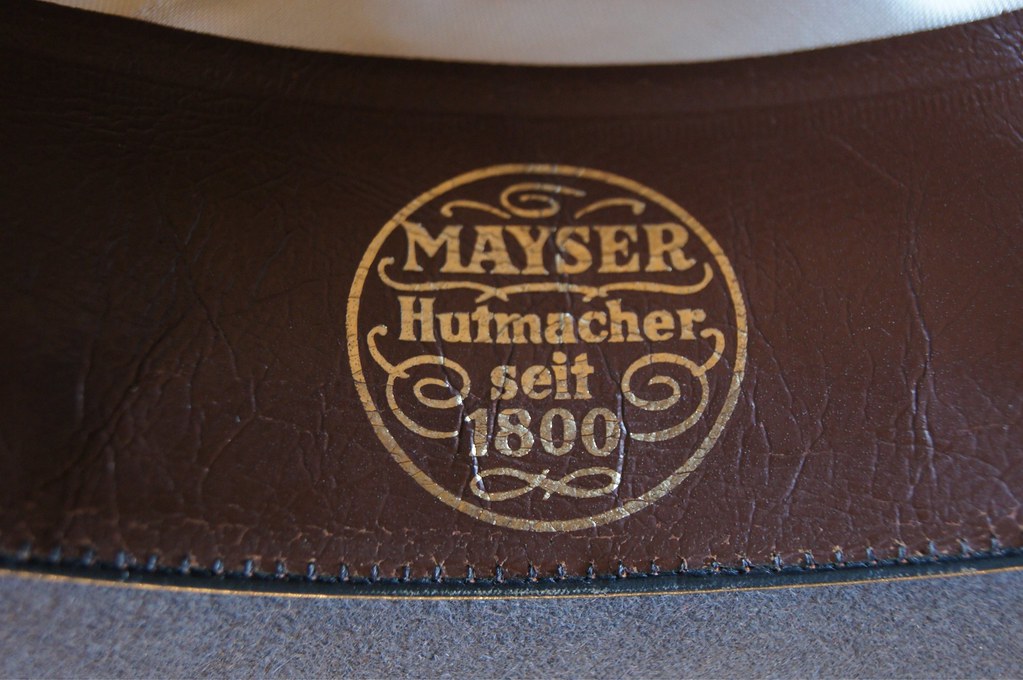
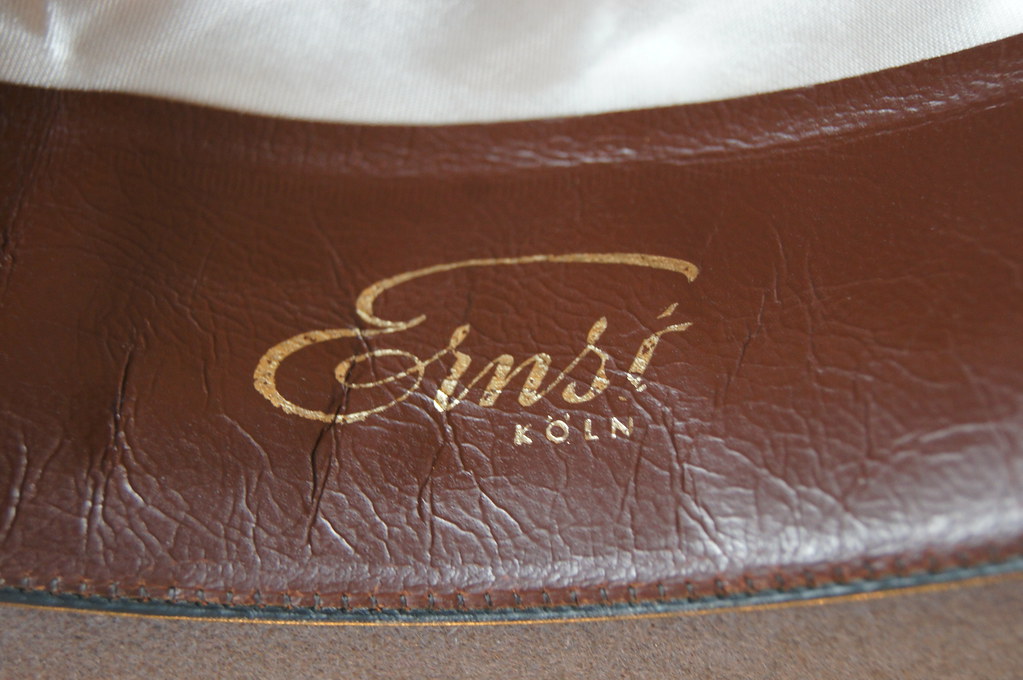
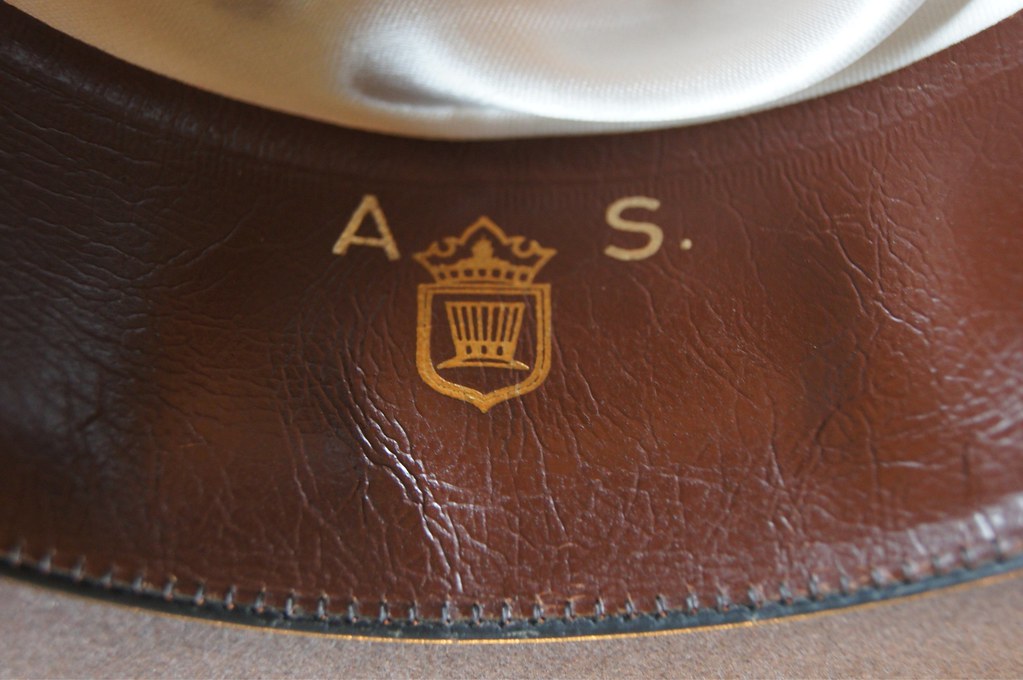


-
Not mine but rare - old (1930s?) - small Echter Borsalino.


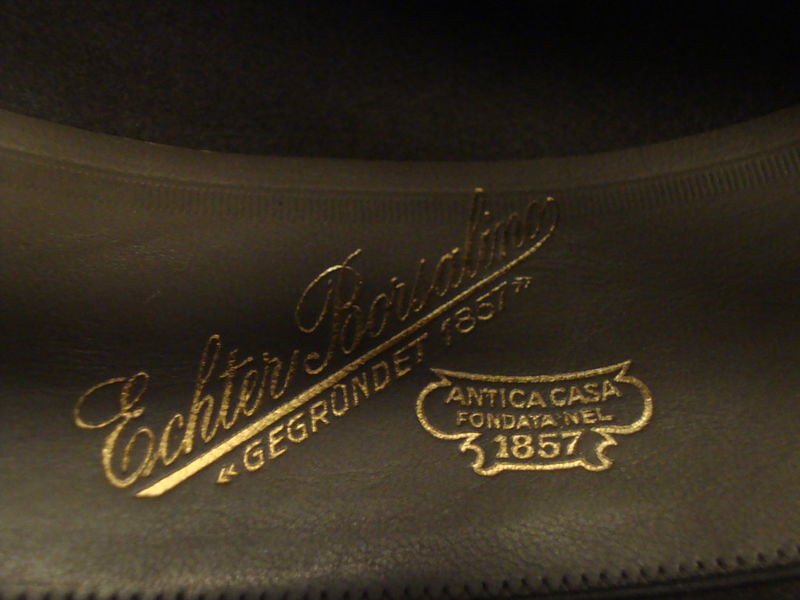
-
It's a real beauty! Thank you for posting the photos!
-
I missed the end of this auction but saved the photo of this great Wilke placard.



Dermotta Wien
in Austrian Hat Companies
Posted
Deutsche Hutmacher-Zeitung (December 1913)